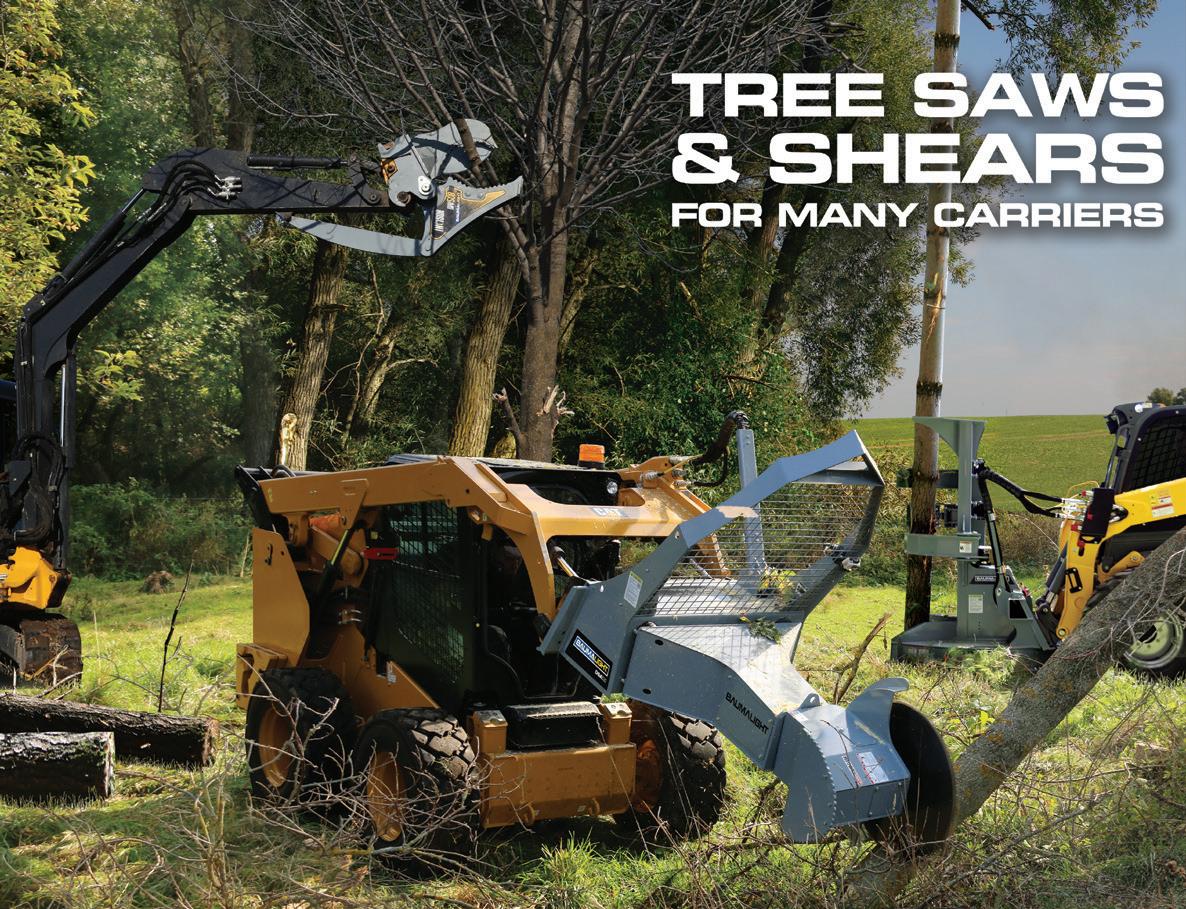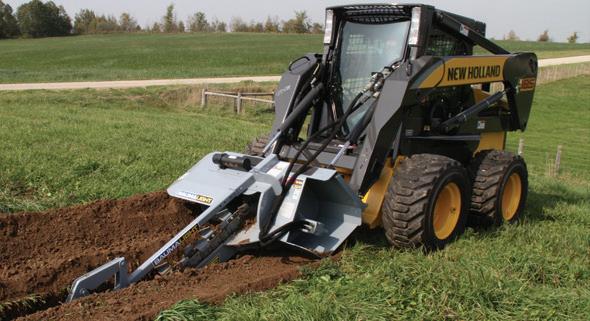

















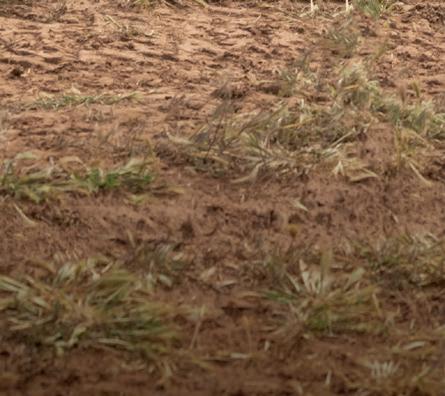
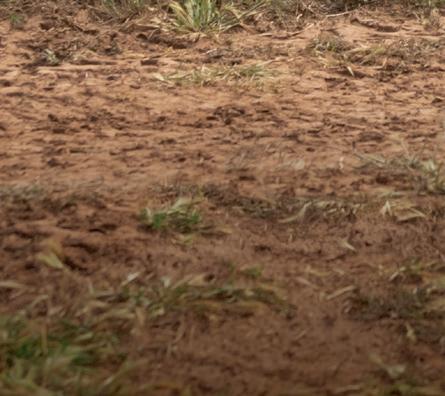
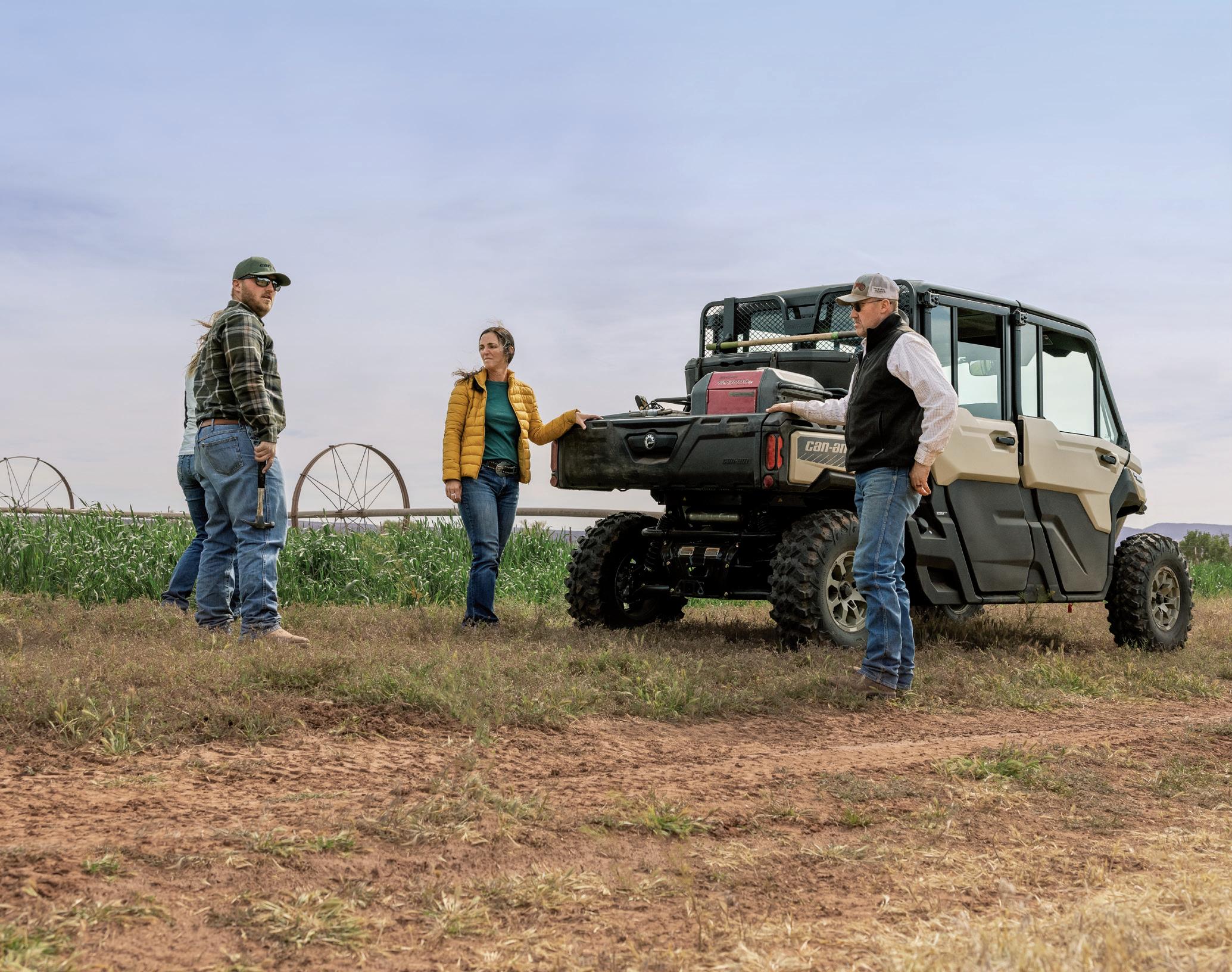



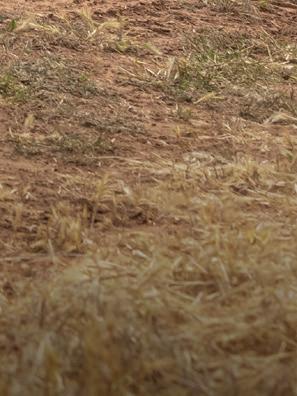
When it comes to farming, Meridian Manufacturing knows how to assemble a championship roster. With a full lineup of SmoothWall Hopper Bins, Corrugated Bins, Augers, Fuel Tanks, Conveyors, Stainless Steel Tanks, and ArchWall Steel Buildings, we have the products to make your operation more efficient, safer, and more profitable. We proudly manufacture across Canada, and along with our network of dealers, our goal is to offer the highest quality products and the most reliable service.
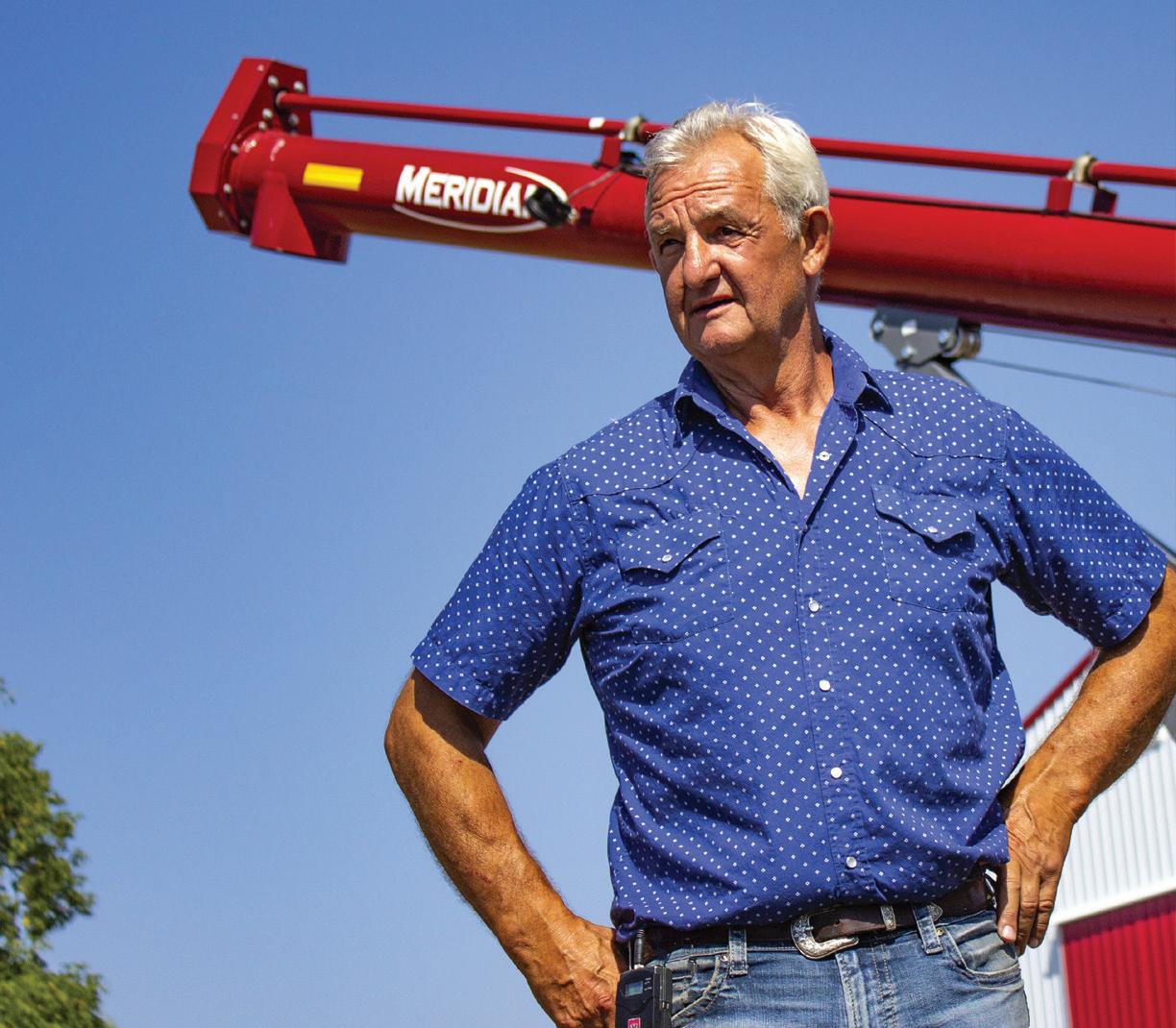
In hockey or on the farm, we live and die with the creed that ‘OKAY IS NOT OKAY.’ You need the product, you need the support, you need the team to make it work.
- Darryl Sutter

Convey-All’s all new CSC-1545 is the no-nonsense, reliable and safe method to deliver your seed varieties, fertilizer and grain. The Commercial Seed Cart features six separate compartments, side drop-chutes, and an overall capacity of 1,525 cubic feet.
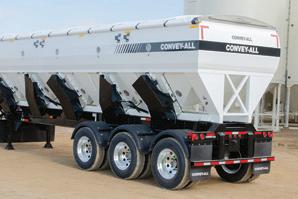

Built with the same exceptional quality and finish as Convey-All’s Commercial Seed Tenders, this cart is unique in that it doesn’t rely on a conveyor for operation. While the unload speed and precision of a Convey-All Commercial Seed Tender is unsurpassed, this offers a simple solution to producers with an existing conveyor.

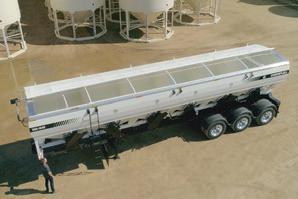



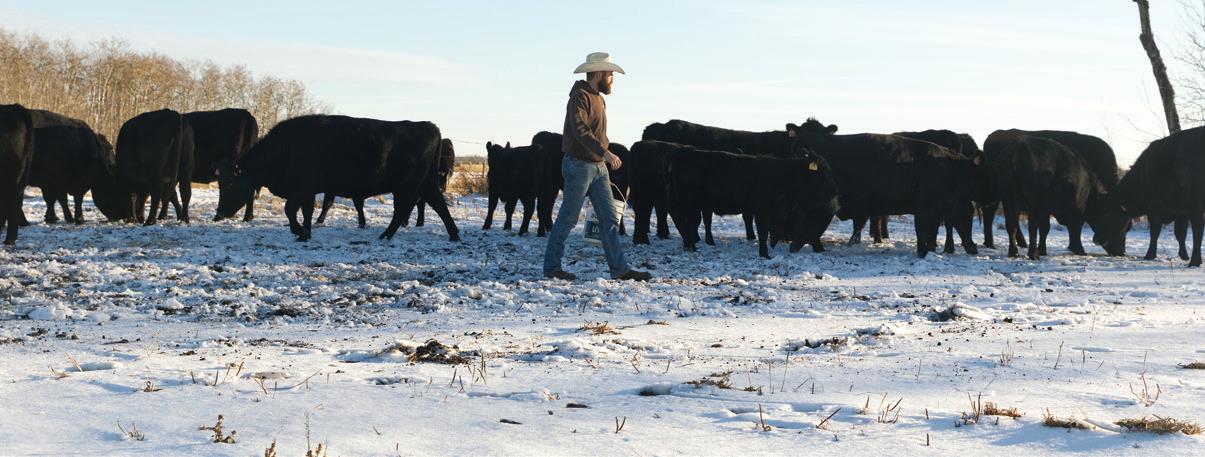



 KEVIN HURSH
KEVIN HURSH
Kevin Hursh is one of the country’s leading agricultural commentators. He is an agrologist, journalist and farmer. Kevin and his wife Marlene run Hursh Consulting & Communications based in Saskatoon. They also own and operate a farm near Cabri in southwest Saskatchewan growing a wide variety of crops. Kevin writes for a number of agricultural publications and serves as executive director for the Canary Seed Development Commission of Saskatchewan and the Inland Terminal Association of Canada (ITAC).

Twitter: @KevinHursh1
What’s the difference between truth and fiction? Fiction has to make sense. For the past few years, world events have been so amazingly unpredictable as to be nonsensical. It’s been an extremely unstable time to operate a farm. If the story of recent years was written as fiction, it wouldn’t be believable.
A worldwide pandemic with myriad supply chain disruptions. A major war in Europe for the first time in nearly 80 years. The drought of 2021 across much of Western Canada. High inflation that has triggered a dramatic rise in interest rates. A chronic labour shortage.
As farmers in this uncertain world, many factors are outside of our control. All the more reason to control what we can.
After the crop contracting fiasco of 2021, some said they’d never forward contract again. Having production shortfalls and having to buy out of contracts was very expensive.
Not having crop contracted in 2022 was also costly. In many cases, contract prices were higher than the market prices available after harvest.
Crop contracting isn’t inherently bad. You just have to be careful. Don’t assume you will always have an average or above average crop. Consider options-based contracts on canola to lock in a minimum price at a set cost. Use production contracts with an Act of God clause, when possible, for protection in the event of a crop failure.
It’s true that market prices often end up better than the prices you can contract ahead of seeding, but there’s value on locking in a profitable price on part of what you hope to grow. It’s a bit of protection, a bit of certainty.
Fertilizer prices are sky high and it’s anyone’s guess whether prices will moderate before seeding. There’s added danger to buying high-priced fertilizer if you don’t have any certainty on crop prices—another reason why prudent crop contracting can be a valuable strategy.
Areas of west-central and southwestern Saskatchewan have seen successive years of drought and soil moisture isn’t great going into 2023. Some crops with elevated prices are going to offer more crop insurance coverage than others. This will be a factor as producers determine their crop mix for the coming year.
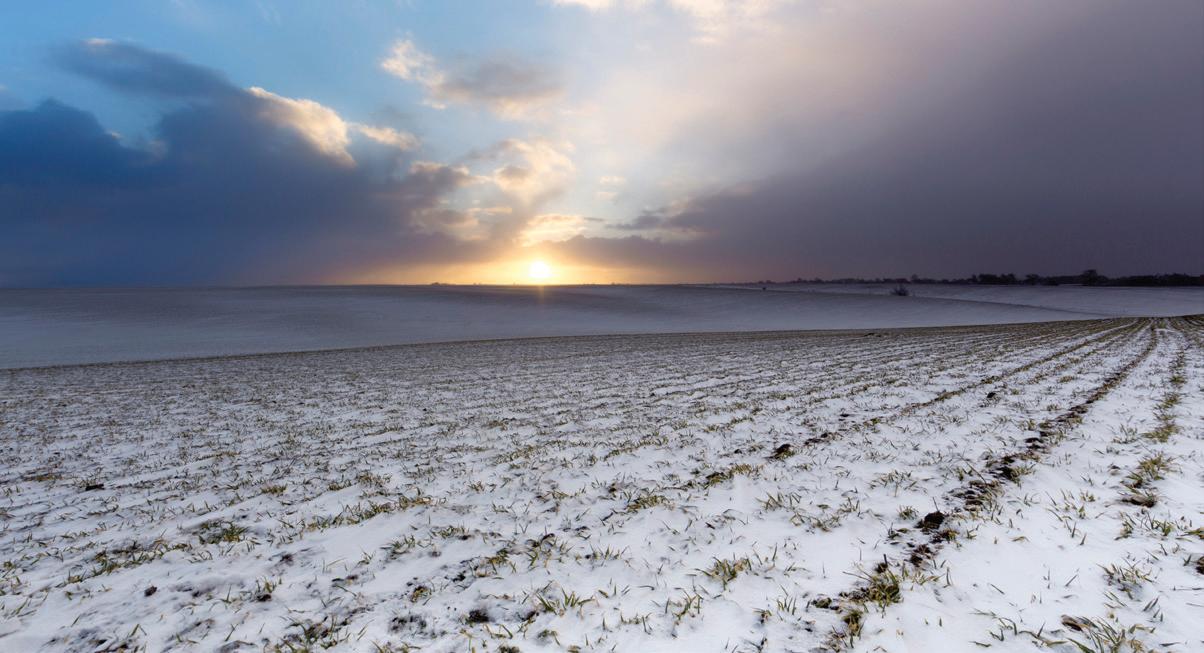
Private insurance options are also worth considering. It’s good to crunch the numbers and see what programs like Gars (Global Ag Risk Solutions) can offer. Don’t wait too long. Last year, the program sold out leaving some producers upset that they couldn’t participate.
For cow-calf producers, the Livestock Price Insurance Program is something to monitor and consider. Unfortunately, without government cost sharing, the premium cost greatly reduces participation in what could be a very useful way to mitigate price risk.
Personally, I like to maintain some crop choice flexibility until close to seeding time. For 2023, I know which fields will be seeded to a pulse crop, but the mix of pulse crops is up in the air. I have seed cleaned for large green lentils, maple peas and kabuli chickpeas. What goes in the ground will depend on market signals and moisture conditions.
However, booking inoculant is a bit of a concern. Lentils and peas need the same rhizobium bacteria, but a different inoculant is required for chickpeas.
By now, it’s well known that new equipment you purchase can have a long timeline before it arrives. Producers are holding onto their old tractors, seeders and combines until they take delivery of new equipment.
Backup plans are always a good idea. What if a tractor, truck or seeder has a major issue and getting repairs will take weeks? What if a key worker, either an employee or family member, comes down with a medical issue? Finding solutions to these sorts of issues has become more complicated in recent years.





Maybe we’ll get back to some level of boring stability. Maybe there are no major surprises around the next corner, but I’m not willing to bet on it.


By now, it’s well known that new equipment you purchase can have a long timeline before it arrives. Producers are holding onto their old tractors, seeders and combines until they take delivery of new equipment.
Crops thrive with our new pre-seed herbicide. Nothing sets peas, lentils and soybeans up for success like a clean field. Which is exactly where new Voraxor® pre-seed herbicide excels. Combining the trusted efficacy of Kixor® with the new active, Tirexor®, it delivers high performance, broad-spectrum burndown, as well as enhanced residual* activity that eliminates tough weeds like volunteer canola, cleavers, kochia and wild mustard. So, clean the slate to make way for what could be your best crop ever. Visit agsolutions.ca/pre-seed to learn more about Voraxor and the rest of the BASF pre-seed herbicide portfolio, including Certitude® and Smoulder™.

















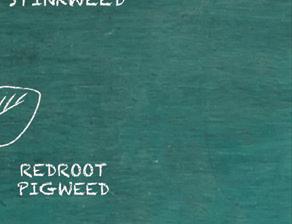











Scott grew up in Killarney, Man. and has been in the grain industry for 30 years. He has worked with Grain Millers Canada for 10 years and manages procurement for both conventional and organic oats for their Canadian operation. Scott is a newly elected board member for Farm and Food Care Saskatchewan and sits on several other committees on both the organic and conventional sides of the oat industry. Scott and his wife Jenn live on an acreage near Yorkton, Sask. Find out more at www.grainmillers.com.
With winter now upon us, the time is now to start marketing the crop that you are going to plant this spring. Opportunities are available to secure early movement and strong prices on many commodities. With the global conflicts currently affecting markets, and recessionary financial situations here and abroad, a solid marketing plan is a necessity on your farm today.
I preach quite often about the benefits of a stable and solid crop rotation on the farm, and likely the current situation will support that even more. Chasing high prices at the expense of your rotation can be a costly mistake more often than not. With current pricing on all commodities at near all-time highs, there is no real need to stray from the course that you have been plotting for years. While there may still be an upside to today’s prices, locking in some of your production at these levels can secure a profit, while still hopefully leaving you excess production above that to market as the year goes on. Let’s take a look at a few of the grains that currently show serious strength into the 2023/24 crop year.

Out here on the Prairies, this conversation always starts with canola. Prices for the popular oilseed have climbed above $20 a bushel this year, and those same prices are available for this coming year as well. Even with the increased cost of inputs, canola still pencils out very well with average yields and this kind of pricing level. Putting some tonnage on for fall at $20 or above gives you some freedom to move grain and generate cash flow at this busy and expensive time of year. This movement also gives you an opportunity to get some bin tops taken off and possibly to turn some inventory to cool it down if the temperatures outside are warm.
Another staple crop throughout the West is wheat. Now whether you grow the most popular hard red spring wheat, or if you are down south and grow durum for the pasta lovers, wheat is another crop that warrants some forward contracting at this time. With the loss of the Canadian Wheat Board, the open market for wheat has at times been quite competitive. With that competition has come space restrictions at certain times of the year. If you plan for a decent amount of wheat acres, getting some booked at prices in the $11-$12 range is a solid bet for early fall movement. One thing to make certain of on wheat contracts when booking way in advance is the specs, premiums and discount schedules. In the open market buyers are free to set these where they wish, so you need to make sure you know what you are signing up for.
Finally, I want to mention oats. With the large increase in acreage in 2022, and the mostly fantastic yields off a large portion of those acres, we are seeing new-crop oat contracts in the $5.50 range. While these prices are considerably better than normal, the $6 and $7 prices are still very close in the rearview mirror. Forward contracting oats can generally provide some good movement and cash flow at harvest time, especially if you can sell direct to a miller that isn’t reliant on the railroad for space in the fall.
Until next time…

Tough-to-control weed populations will continue to grow if best management practices aren’t used. And that’s where the Advanced Weed Control program and its Performance Support Guarantee provides you with peace of mind. Advanced Weed Control is a simplified, complete weed management solution. It provides you with a list of solutions you can select from and combine across a season to best suit the weed challenges you expect to have in your fields. These product combinations have been identified as leading chemistries you can trust that work together to provide your crops with multiple modes of action and an effective herbicide resistance management program.
The option to apply new Voraxor® Complete herbicide in the spring prior to seeding peas or lentils, and having Zidua® SC herbicide applied in the fall ahead of lentils are the two newest additions to the program. Voraxor Complete offers an effective one-two punch of consistent burndown and extended residual activity prior to seeding peas or lentils. A fall application of Zidua SC ahead of lentils gives you a head start on next season’s spring cleaning.
We’ll cover up to 100% of respray support costs.1
We aren’t done until weeds are. The Advanced Weed Control program comes with a Performance Support Guarantee that offers hassle-free support in the unlikely event of weed escapes.1 That even includes resistant biotypes, wild oats, kochia, cleavers and flushing weeds.2 Eligible Growers can receive up to 100% of the BASF respray purchase value3 to correct the specific weed problem in each field.
1 When recommended products are used up to labelled guidelines.
2 When adhering to specified rates outlined in the product label for the weeds outlined in the program.
3 Calculated at the Suggested Retail Price (SRP).
The simplicity of our support. Here’s how growers can make a claim in the unlikely event of weed escapes as part of the Performance Support Guarantee:
• Call AgSolutions® Customer Care at 1-877-371-BASF (2273)
• Claims must be made before July 15 or within 3 weeks of application
• You can check the status of their claim by calling 1-877-371-BASF (2273)
• BASF will contact the grower directly when their claim has been fully reviewed, investigated and resolved
Re-spray options available.
4 Refer to Centurion® and Liberty® 150 herbicide labels for full list of covered weeds and specific application timing.
5 Do not exceed maximum labelled rates for Liberty 150 herbicide per season.
Visit agsolutions.ca/AdvancedWeedControl for more information on the program and recommended product combinations.
Always read and follow label directions.
AgSolutions, ARMEZON, BASAGRAN, DISTINCT, HEAT, LIBERTY, VORAXOR and ZIDUA are registered trademarks of BASF; all used under license by BASF Canada Inc. © 2022 BASF Canada Inc.
CENTURION is a registered trade-mark of Arysta LifeScience Group Company
CANOLA LENTILS PEAS SOYBEANS CORNSelecting seed for the upcoming year can be an exciting and challenging process. Maximizing your return on investment comes through more than the base yield potential. Traits such as disease resistance, standability or drought tolerance should be considered as well, depending on your region and needs. Seed growers and breeders shared their insights on newer cultivars for Canadian Prairie farmers to consider for 2023.
When looking at wheat, both Simon Ellis, owner of Ellis Seeds in Wawanesa, Man., and Greg Stamp, seed sales manager at Stamp Seeds in Enchant, Alta., spoke of AAC Hodge VB, a hard red spring wheat worthy of your rotational consideration.
“It has the highest yielding potential according to trials in Manitoba from last year,” says Ellis.
Hodge is quite tall, and Ellis explains that farmers need to consider its suitability for their region. Its height could increase lodging risk, but it could also have the benefit of providing extra straw for catching snow or as bedding for cattle.
Hodge came in at slightly lower protein than the check but has excellent disease resistance and is midge tolerant. It comes in a varietal blend with AAC Hockley as its refuge variety.
AAC Hockley is another new CWRS.
“Hockley has high yields, excellent standability, a strong disease package and good protein,” says Stamp. “It’s short,
but has a ragged look in the field, with some heads sticking up above the others.”
For oats, Ellis is excited about AAC Douglas and AAC Endure, both of which boast increased yield.
“We saw Douglas stood extremely well and the seeds hung onto the panicle really well, so we were able to straight cut without any risk of shelling or of bad lodging,” says Ellis.
They ended up swathing the Endure.
“We had some green issues, and we were worried that seeds were going to start shelling,” says Ellis. “If a farmer swaths every year, I think [Endure] would be a great fit.”
Stamp has found AB Tofield to be a strong, dual-purpose barley option. It’s a six-row smooth awn variety that is leafy for forage for cow-calf producers.

“It stands better than any six-row we’ve seen,” says Stamp. “We’ve seen excellent grain yield, but also excellent forage yield. It’s the six-row for everybody.”
AB Hague is a new two-row barley cultivar with drought tolerance, good yield, a strong disease package and it maintains bushel weight.
Located in Norquay, Sask., Lindgren Seeds is owned and operated by Jordan and Jennifer Lindgren.

Jordan and Jennifer take great pride in being able to continue their century family farm. They are passionate about maintaining the family aspect in the ever-changing corporate farm environment.
Family and agriculture are the most important aspects of their lives. The Lindgrens have four children who are all active participants in all farm activities.
Lindgren Seeds work diligently at producing high-quality varieties as well as maximizing production on their farm. They do this by using field-scale trials to determine which varieties, genetics, products and practices work best on their farm. This also allows them to compare different varieties to get a true comparison. The Lindgrens place importance on educating themselves and in sharing this information with fellow farmers and customers.
This past 2022 season, Lindgren Seeds produced: four hard red spring wheat varieties; AAC Hodge VB, AAC Hockley, AAC Starbuck VB and AAC Wheatland VB.
They have increased their pulse acres; AAC Chrome yellow peas provided great standability, harvestability and yield this growing season.
Arborg oats also performed well in its standability and production.
Jordan and Jennifer plan to continue to challenge and expand their knowledge of ways to improve their farming practices so they can continue to produce high-quality pedigreed seed. They are dedicated to ensuring that they will maintain a family atmosphere on their farm while continuing to educate and share their passion for agriculture.
Lindgren Seeds prides itself on continuing to test new varieties and provide their customers with a great quality seed.


“If I had a dryland customer who needs a two-row feed barley to harvest with a combine, I’d say to look at AB Hague,” says Stamp. “It has drought tolerance, it’s not too short and it will do well on dryland.”
When it comes to malt varieties, market acceptance is important.
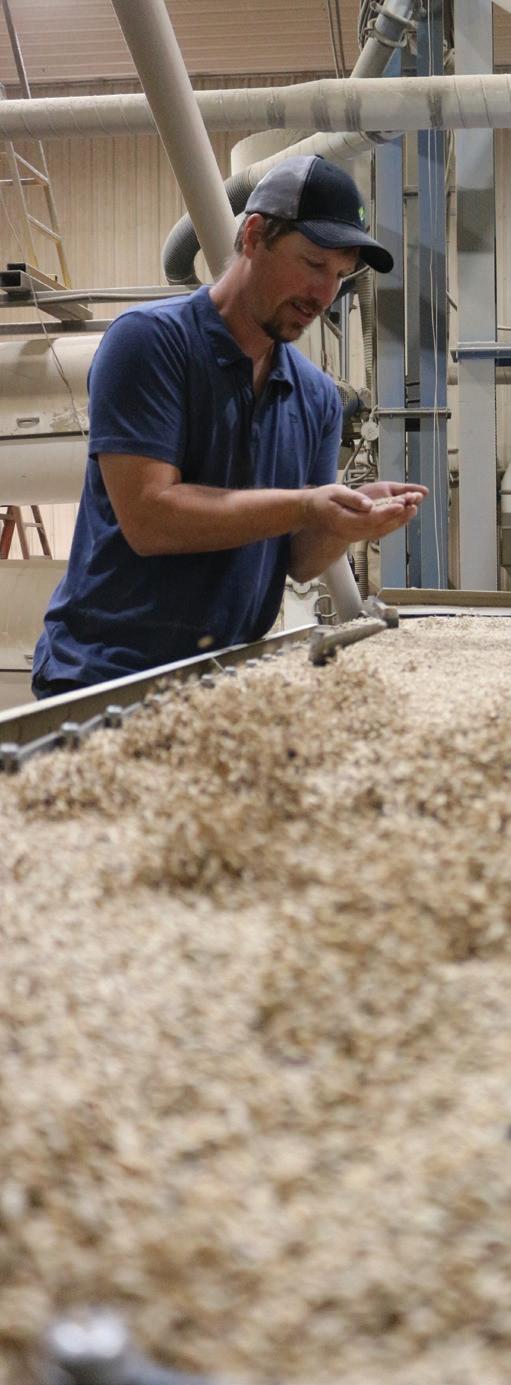
“You have to watch what is trending in malt varieties,” says Stamp. “A new one that looks promising for malt acceptance is CDC Churchill. It yielded well and stood well for us.”
Stamp explained that there is growing demand in the plantbased foods market for peas with higher protein content.
While not new, CDC Lewochko fits that high protein niche well. It boasts good yield, low seed coat cracking, low dimpling and good lodging resistance.
“Lewochko is the variety preferred by some pea processing plants in Manitoba,” says Ellis.
There is also a new variety coming out called CDC Hickie.
“It’s a little better yielding, and a bit lower protein than Lewochko,” says Ellis. “It’s still in the top tier for protein, so it should be a preferred variety. It has good lodging, protection against mycosphaerella blight and fusarium wilt resistance.”
Ellis will be growing CDC Hickie in 2023, and it will be commercially available the year after.
Ellis shed some light on two new Roundup Ready soybean cultivars that fit slightly different needs.
Young R2X is an early season variety, coming in about four days earlier than later varieties. Ellis reports that yield this year was fantastic, and it has desirable tolerance to iron deficiency chlorosis (IDC).
Meanwhile, Hart R2X is a two days longer season soybean.
“We saw that it was about four days longer to maturity than the Youngs were,” says Ellis.
There is a benefit to having a shorter and longer season soybean each year, whichever cultivars you choose.
“Having a short season manages that risk of fall frost, but having a little longer season can sometimes build a little more yield,” says Ellis.
Last year, Ellis found that the longer season soybeans performed better, while due to the drought, the early season soybeans got burnt and didn’t perform as well.
In 1994, the landscape of the Saskatchewan Prairies was drastically changing, with wooden elevators closing and efficiencies being developed along the CP main line. After three years of hard work, SWT opened their doors to producers on January 8, 1997.
The SWT inland grain terminal is located seven miles east of Gull Lake, Saskatchewan, along the Trans-Canada Highway and connects to the Canadian Pacific Railway’s main line. This location ships approximately 500,000MT annually and is considered the largest shipper of grain in southern Saskatchewan. SWT purchases and merchandises field crops agronomically suited to the area. These include
durum wheat, canola, yellow peas, red lentils, flax and spring wheat. SWT has invested significant capital in their blending facilities, capacity and rail to provide producers and buyers with efficient and accurate services.

Through their retail business, SWT sells directly to producers in six strategically located outlets throughout southwest Saskatchewan. These are located in Kyle, Cabri, Gull Lake, Shaunavon, Wymark and Hazenmore. Each location is staffed with experienced agronomists and provides producers with a full-service farm supplies outlet, including fertilizers, crop protection products and agronomic services.
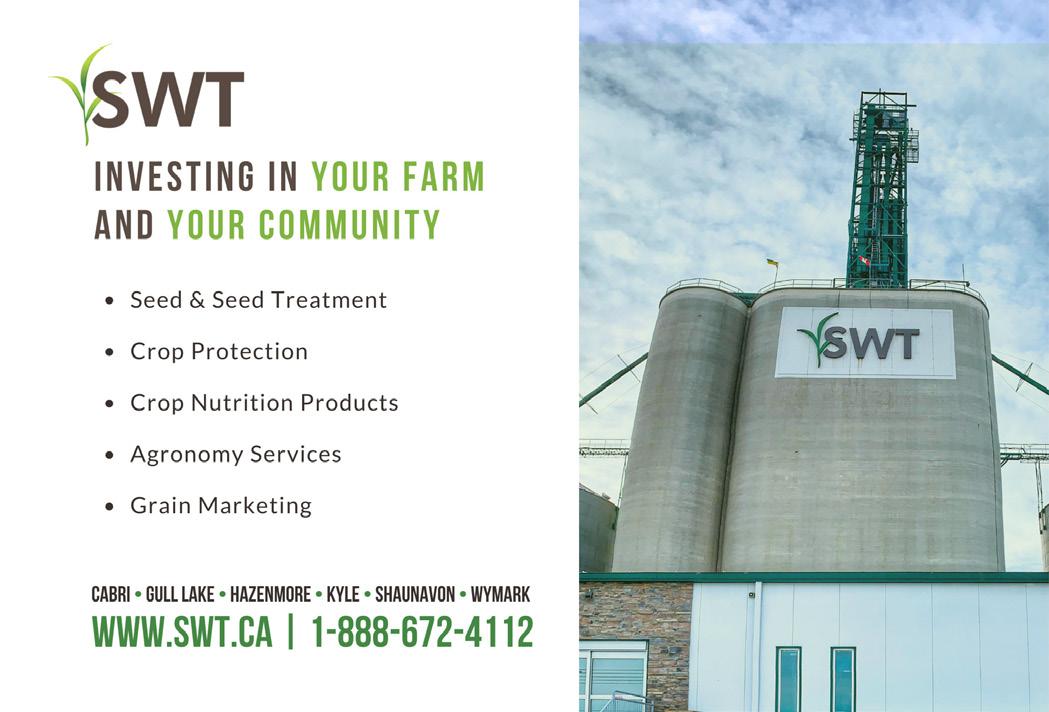
“The big thing is soybeans are variable,” says Ellis. “They seem to perform really well in a select area and then outside that area there might be a different bean that does a lot better. With beans, you really want to talk to a local seed grower who is producing them and has a pretty good idea of what they’re going to look like.”
Canola traits in development are varied and challenging to balance.
Blackleg and clubroot are the primary focus on the disease side for canola, as they are the two most yield-robbing pathogens.
“We’re seeing more canola brands start to label their blackleg resistance genes,” says Clint Jurke, the Canola Council of Canada’s agronomy director. “There are seven or eight different types of blackleg resistance that are currently being used in the industry. We’re asking the seed companies to identify which those are so that farmers can choose the right gene that’s going to control a race of blackleg pathogen if it shows up in their field.”
A new concern is verticillium stripe. It has been around since 2014, but in 2022 it hit severe levels in Manitoba and eastern Saskatchewan.
“We’re seeing some brands starting to label how much verticillium resistance they have in the cultivars,” says Jurke.
Rob Duncan, professor and brassica breeder at the University of Manitoba, is looking at abiotic stressors, such as heat, limited and
excessive moisture as key focuses in his research program.
The trick is that there could be trade-offs in other important traits.
“I think what farmers are going to see coming out over the next years includes different combinations of incremental improvements on overall yield performance, disease resistance, diversity in that disease resistance, continuing shatter tolerance, and different herbicide tolerance,” says Duncan.
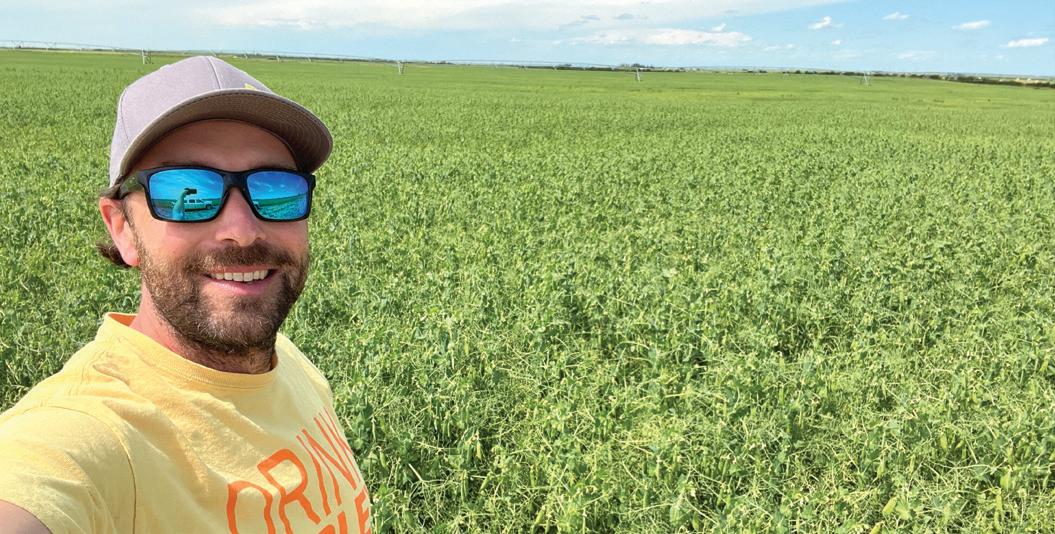
The whole package should be considered before pursuing a cultivar. Duncan explains if there are improvements in yield in only a small region, a cultivar likely won’t be commercialized. Additionally, if there is strong yield, but fails on characteristics such as seed quality or disease resistance, the line won’t be commercialized.
“Those are the challenges that a breeder is dealing with when he or she is selecting for a dozen plus traits at a time,” says Duncan.
Once a cultivar is commercially available, farmers can play an active role in evaluating the performance. Duncan believes farmers should consider growing multiple cultivars of any crop on an annual basis. This allows them to see how new cultivars perform with their methods and in their region.
“It allows them to transition in new cultivars that are coming to market and phase out cultivars that maybe aren’t performing at the top for them anymore,” says Duncan.
Take this list of new cultivars as a launching point to check out what you might be able to phase in to your rotation for 2023.
With an ever-growing lineup of seed varieties, from cereals to pulses and special crops. SeedNet has the seed professionals to help your operation succeed as SeedNet is farmers growing for farmers. SeedNet seed dealers have long-held knowledge of growing, processing and selling seed which has driven their success. SeedNet is dedicated to providing farmers with the highest quality seed and farm inputs in Western Canada. In 2023, SeedNet is excited to add a new variety to its lineup: AB Prime Barley. AB Prime is a two-row feed barley with great standability and high yields. This new barley has high yields, good lodging resistance and

moderate resistance to FHB, smuts and scalds. Also highly ranked in the SeedNet lineup is AAC GoldNet Durum. AAC GoldNet Durum is an exciting new durum that comes from the parentage of AC Transcend. This durum has exceptional yields, an excellent disease package and strong standability. And the final variety to note is Fabelle Fababean. Fabelle Fababean is a medium-sized fababean with low tannins and high yields. Developed by DL Seeds in Manitoba, Fabelle Fababean is a low vicine/convicine fababean that fits well in the growing food and feed markets. To view, SeedNet’s entire lineup of exclusive varieties, view the 2023 seed guide today!

It’s time to start changing the way we talk about farmers and farming. To recognize that just like anyone else, sometimes we might need a little help dealing with issues like stress, anxiety, and depression. That’s why the Do More Agriculture Foundation is here, ready to provide access to mental health resources like counselling, training and education, tailored specifically to the needs of Canadian farmers and their families.
Seed Varieties: Camden oats
Defy durum
Grassland durum
Synergy barley Austenson barley Greenstar lentils
Christiaan De Lange: christiaan@nexgenseeds.ca 1-306-741-6198

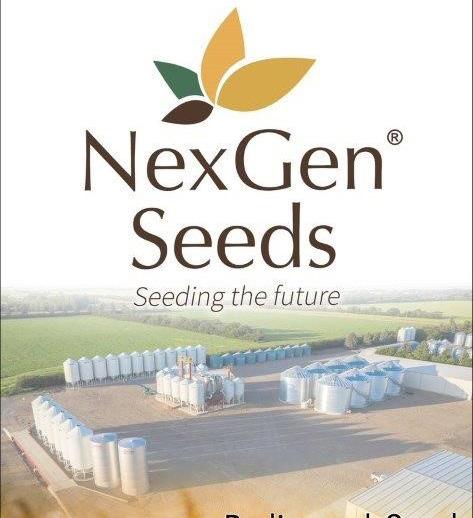
Impulse red lentils
Nimble red lentils
Lima lentils
Carver yellow peas
Spectrum yellow peas
Lewochko yellow peas Inca yellow peas
Jordie Johnson jordie@nexgenseeds.ca 1-306-750-1701
40 - Limerick, SK - SOH 2PO

DURUM: CDC Alloy, AAC Succeed VB, AAC Stronghold.
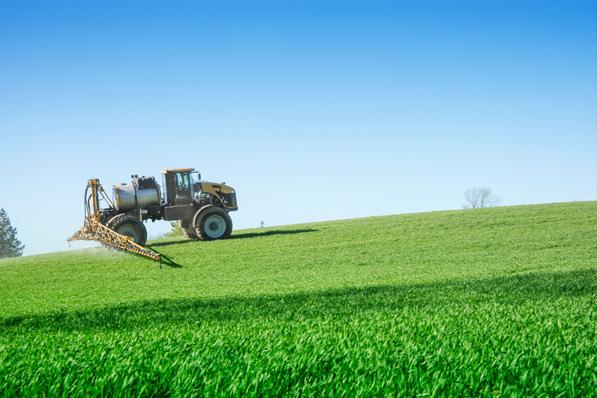
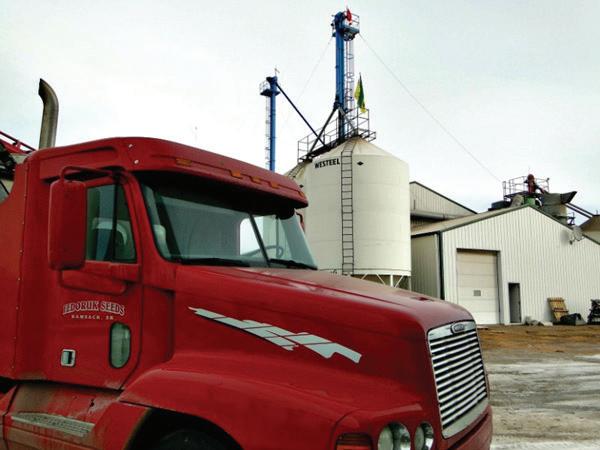
SPRING WHEAT: AAC Magnet.
FIELD PEAS: AAC Chrome.
BARLEY: AAC Synergy, CDC Copper.
FlAX BROWN: AAC Marvelous.
RED LENTILS: CDC Proclaim.

GREEN LENTILS: CDC Lima.

Tammy Jones, B.Sc., P.Ag
Tammy Jones completed her B.Sc. in crop protection at the University of Manitoba. She has more than 15 years of experience in the crops industry in Manitoba and Alberta, with a focus on agronomy. Tammy lives near Carman, Man., and spends her time scouting for weeds and working with cattle at the family farm in Napinka.

The Canadian Weed Science Society Meeting in Halifax, N.S., was Nov. 14-17. A poster presenting the “Residual Weed Population Shifts in Manitoba – 1978 to 2022,” provided by Julia Lesson (weed monitoring biologist with Agriculture and Agri-Food Canada), Kim BrownLivingston (Manitoba Agriculture) and Shane Hladun (AAFC), was a summary of 704 fields surveyed in 2022. This is the sixth time that Western Canada has been surveyed in such a manner. The new series of general surveys in annual crops was planned to start in Saskatchewan in 2019, followed by Manitoba and then Alberta in subsequent years, but had been slightly delayed.
The survey provides information on the abundance and distribution of weeds in major annual crops including wheat, barley, oats, corn, canola, soybean, lentils and peas. This varies by province based on the prevalent crops. The weed survey data can be used to document the changes in weed population that have occurred since the previous provincial survey to focus efforts on research and extension work to address emerging issues. These studies are conducted in each province on a rotating basis and are a massive amount of effort for the individuals, since there are 20 spots sampled in every surveyed field.
Top-ranked weeds are one of the most familiar outputs of the weed survey. The survey measures the frequency of occurrence (per cent of fields) of a weed, the uniformity or distribution within a field (per cent of samples with the weed) and the density (counts within sample quadrats). The relative abundance of a weed species is then calculated by combining those three measurements, after normalizing these against all weed species. Because relative abundance is standardized and unitless, it can be used to rank and compare weeds overall in the province and within crops or regions.

Rather than focusing on Manitoba results, there were some interesting observations collected that can broadly apply. As noted by the authors of the survey, the spring of 2022 was extremely wet, with delayed seeding. And while it was a very challenging year, weed control was good, providing lower weed densities and higher weed-free samples than ever before. This is reflective of trends since the first weed survey in the late 1970s, showing that effective herbicides and integrated weed management practices continue to enhance crop production efforts.

Shockingly, there are certain weeds that seem to defy changes in production practices and continue to be prevalent. It is no surprise that weeds that are adapted to a province or a region will adapt to production practices and continue to persist or succeed in reproducing. To demonstrate this, there are seven weeds that remain in the top 20, since the first time that the surveys were done. For instance, green foxtail has been, and continues to be, the most abundant weed in the fields in Manitoba and is also ranked high in Alberta (7 in 2017) and Saskatchewan surveys (1 in 2014-15). For the first time in the duration of the survey, wild oats were not in the top five list of weeds for Manitoba, but this might reflect the late seeding dates, which is a great integrated weed management tactic to reduce wild oats. Nonetheless, wild oat is still a top 10 weed. And crops that are frequently in rotation continue to be major weed problems in future years.
The red flags in this weed survey were not some of the weeds that make the news frequently in Manitoba, such as waterhemp or Palmer amaranth. Talking with current and former weed specialists in Manitoba, it was not surprising to see Golden dock make a jump to 17 on the weed survey, which is an increase of 68 positions from the first survey. It was probably the most frequently submitted plant/picture for identification this year. Likewise, foxtail barley has taken a 70-position jump and is now 11 on the weed list. Meanwhile, bluebur, dog mustard and Russian thistle have plummeted in relative abundance in Manitoba, perhaps based on the growing season, but also a continuation of the trends from the previous few surveys. In addition, the Manitoba survey results show that canola, kochia, biennial wormwood, round-leaved mallow, wheat and yellow foxtail were found at their highest relative abundance in the 2022 survey. There is consistent and increasing concerns about kochia across Western Canada, and clearly Manitoba is not immune to that issue.
The summary of the three provincial surveys will be published to provide that snapshot of weed issues for across Western Canada, as has been done in the past. These samples have also been used to help assess herbicide resistance issues. The overall summary of Western Canada will also provide insights and areas of focus for future weed research efforts as well as indicate where there are successes. If there is ever an opportunity for you as a grower or an agronomist to participate in the weed survey, please do so.
As technology continues to transform agriculture, GrainBrain’s May launch quickly saw the app become a digital farm book, always available right in producers’ pockets.

Launched by Alberta-based GrainBrain, the app is designed to increase transparency in agriculture and assist producers in making more informed decisions. It’s a source of information for all ag players, a digital focus group and the next social network for farmers worldwide.
“We allow farmers to review, research and collaborate on everything agriculture related, such as owner/operator in-field experience of equipment, inputs and so on,” says Jeff Bilow, GrainBrain co-founder and CEO. The firm provides advisory services for organizations and knowledge seekers in the agricultural space.
At times, farmers rely on others or piece together online information for answers, creating a more reactive than proactive approach.
“There is great power in research, reviews and sharing,” says Bilow. “Our goal is to provide a source for producers to share their knowledge and experiences with others. They can come to one place to read about their experiences and take it a step further to anonymously ask questions to and with their fellow producers.”
Bilow and GrainBrain co-owner Lander Anderson combined their experience within the agriculture industry to make this app a reality, allowing farmers to help other farmers understand the issues and benefits of agriculture products. Their joint marketing partnership with Toronto-based Ukko Agro, operating at the intersection of plant and data science, helped shed light on technologies that increase profitability. Their vision is to link farm activity to economic outcomes, enabling farmers to make more informed, data-driven decisions for farm operations.
“We always look for opportunities to build relationships with
producers and companies where we can mutually benefit from collaborating,” explains Bilow. “It feeds into our vision for GrainBrain to review, research and collaborate on everything agriculture.”
The app also enables farmers to read and leave ratings and reviews for all things agriculture.
“It’s a simple concept yet to exist in our industry fully,” says Bilow. “Beyond that, we have included the option of creating groups and direct messaging. So, apart from the reading of reviews, there is also the option to ask other users questions in an organized fashion to document issues and solutions.”
Many farms in Canada and globally have reached out to GrainBrain expressing the need for a platform to discuss agricultural issues.
“We’re trying to solve a long-standing problem,” explains Bilow. “How many times has a farmer, rancher or anyone in agriculture heard, ‘this is the first time we’ve seen this issue’ or ‘if I could only speak to someone who has operated this or applied this on their farm’? Every farmer has asked this at least once.”
The app was designed to provide farmers with a true, non-geographically limiting, time-constrained or curated opportunity where anyone can review anything on their farm, ask questions and collaborate about issues they have. Topics include equipment, precision agriculture, seed and fertilizer, chemicals, carbon credits, the carbon farm economy, sustainability and more.
Bilow is excited to work with others and share information that provides opportunities for change in how ag products, services and supports are delivered to customers.
“The icing on the cake is the direct messaging within the platform,” he says. “This allows farmers to reach out to those that have, for example, run equipment they are looking to purchase or are having an issue with. There are no limits. They can talk about the good, the bad and the ugly.”
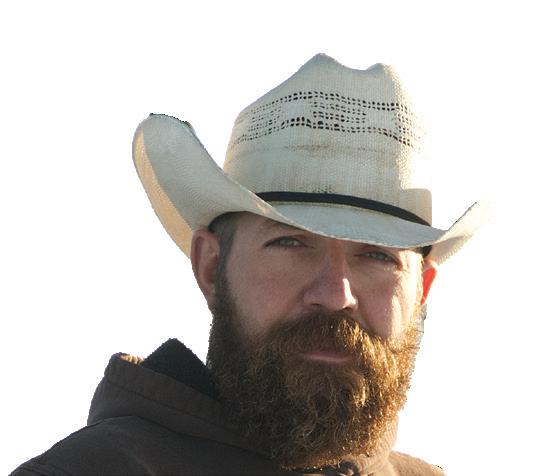
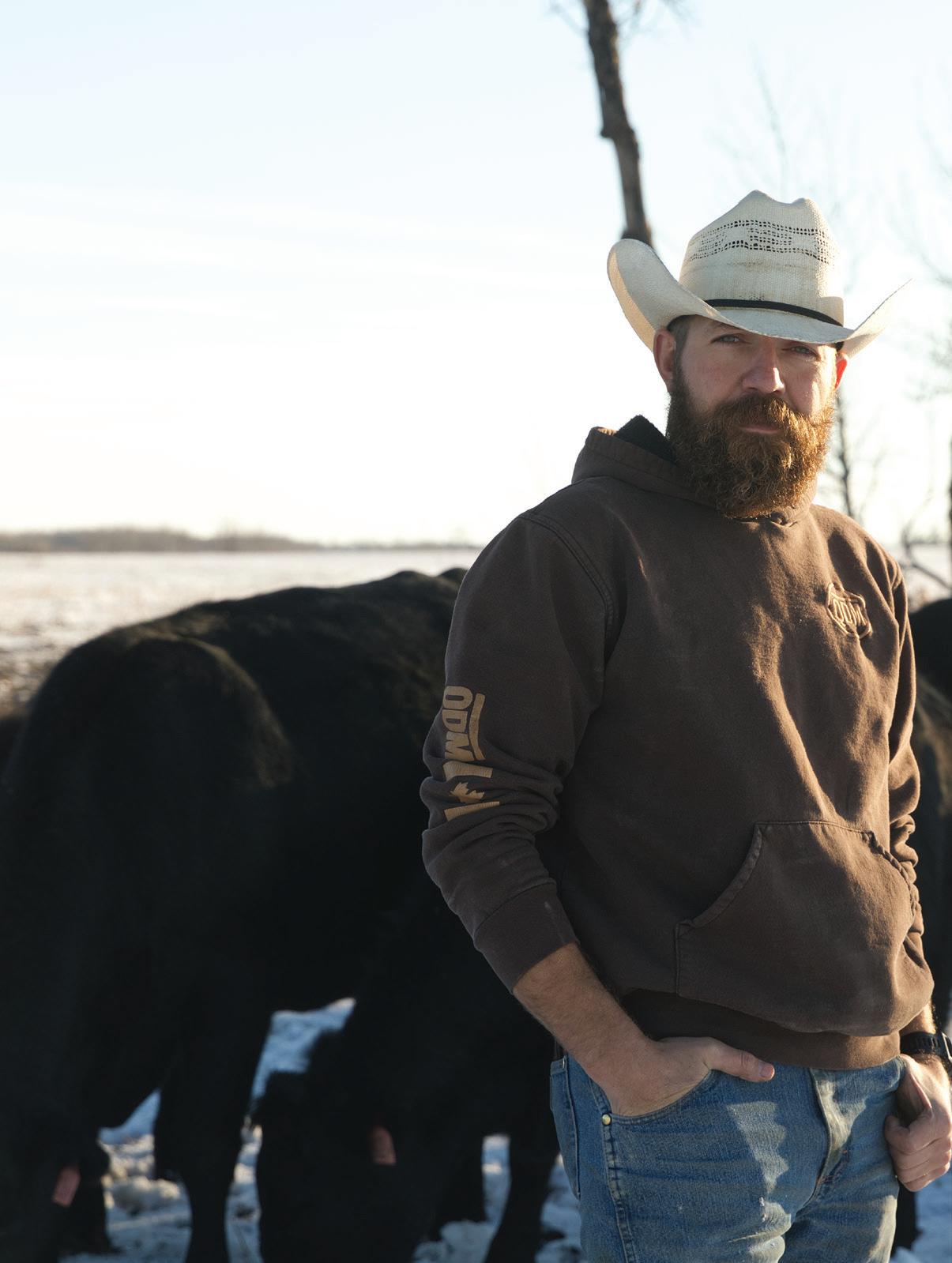
Everyone in rural Canada has a story to tell. Some are, admittedly, more interesting than others. While many are the strong silent type, content to put their head down, grind out a day’s work, rinse and repeat, that doesn’t really resonate with Quick Dick McDick—at least the strong silent type part. He absolutely loves to work hard, but boy does he have fun doing it.
The son of Tuffnell, Sask. farmers, 39-year-old Quick Dick McDick, better known to family and friends as Dickson Delorme, is perhaps the most reluctant social media star in Canada today. His recent brush with celebrity status, specifically in the agricultural world, was almost all for naught as he spent most of his adult life off the farm, working the better part of two decades in northern Alberta and B.C. in the oilpatch.
Fresh out of high school, a friend working in oilfield services in Brooks, Alta. helped Delorme land a job and he spent the next three years in southern Alberta, before relocating up to Grande Prairie, an area he says reminded him of home.
“I fell in love with it,” he says. “The amount of rivers, mountains and forest is amazing.”
For the next 16 years, he worked in fracking, well services, transportation and logistics. However, the trajectory of his life changed with one unbelievably long trip. On June 1, 2019, Delorme set out on a 27,500-kilometre motorcycle journey that took him across Canada and the U.S., covering 10 provinces, two territories and 21 American states. Before he left, though, his brother suggested he download Snapchat and post a story on occasion and check in with family. Delorme obliged and chose Quick Dick for a username so nobody could find him online. One problem, the handle was already taken. He added the McDick suffix, and the rest is history.
Upon his return to Grande Prairie, Delorme found himself with a job opportunity in fracking down in South Australia’s Moomba Desert, where the average daily high in summer is 38.6 C. Excited for the adventure, he said yes and briefly headed home for a wee bit of downtime in preparation for the continental move. While spending time around town, he bumped into Mark Rogers, owner/operator at the Bar-R Ranch and the man who farms Delorme’s father’s land. They had a cordial catch-up and Rogers asked if Delorme could help him move cattle the next morning. It was a date. It turned out to be quite the day.
“We went out and moved some cows and that night I sent an email off to the guys in Australia and I said, ‘guys, I don’t think I’m going to leave home, I think I am going to stay here.’ I don’t know why I ever left this place and that was it.”

It wasn’t that moving cows was a new idea, but for the young man who made it home twice a year—if he was lucky— spending a day off grid was a complete culture shock, and it deeply impacted him.
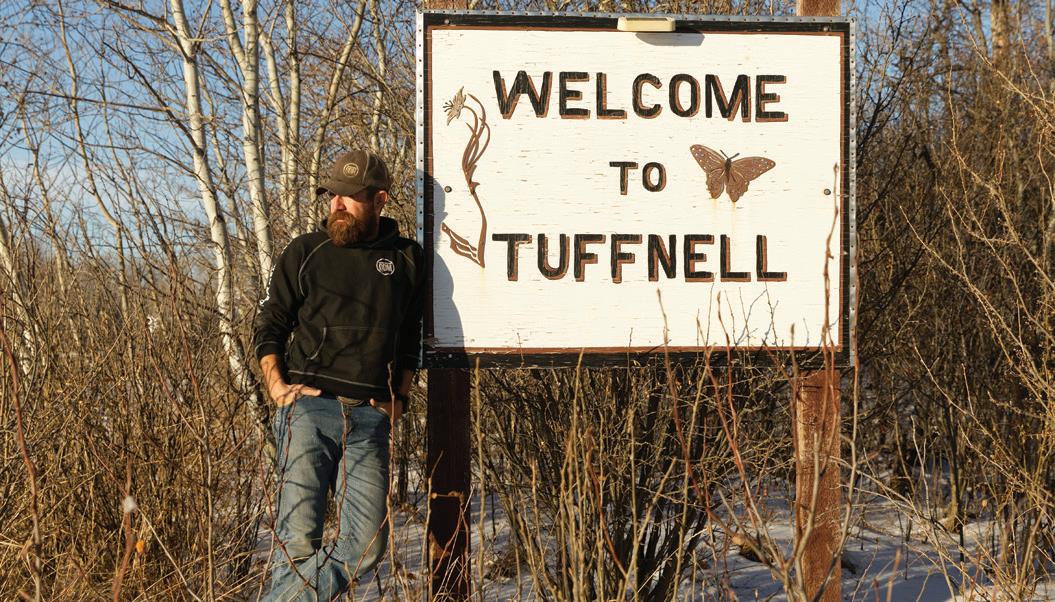
“I lived a life of 19 years of your phone going off 24 hours a day; a very high-stress environment,” he says. “It was great, it was an awesome career and offered a lot of great opportunities doing what I did. But there’s just something about being out in the middle of Saskatchewan with no phones ringing, no traffic around and just you and another guy and a couple of cattle out there moving them one place to another. It was the craziest epiphany that I ever had, and it was the first time in 19 years all of a sudden I just felt like I was right where I needed to be. And I was happy.”
That moment brought him back to the farm, and it was there that the online persona really began to take off, although he insists that there’s no separation between himself and the character, stating the only difference between himself and Quick Dick is a “bit of uncensored barbecue sauce.”
Back at the farm full time, one day he found himself out gathering firewood with his dad. Always one for theatrics, Delorme made a video, depicting a fast-talking Quick Dick McDick as an infomercial salesman encouraging people to come buy dad’s firewood. He shared it around with a few buddies and they texted back letting him know they were on the floor laughing.
The shorts began to circulate around his area and eventually he started to produce one video each day.
“It just kind of spread like wildfire,” he says. People would ask him, however, what was in the background of his videos, which was often a handful of cattle or farm equipment. That gave him the idea to focus his craft on agriculture. By this time he had hundreds, if not thousands, of people in the area and beyond following him. Many wanted to see his back catalogue. Finally, he made a YouTube channel and began to post videos in late 2019.
“When I put it on YouTube, it just started exploding,” he admits. The longer format let him create content that could go into greater detail about specific topics or remove constraints when he would tee off about a subject with an extended rant.
All his social media platforms serve as one giant creative outlet and has allowed him to start a dialogue about matters near and dear to him.
“Sometimes I talk about energy, oil and gas or government policy. It seems like it’s a unique way to talk about what’s going on in our world, be it agriculturally or geopolitically. There are no topics I’m afraid to cover. I guess my goal at the end of it all is to have people laugh and pay attention to relevant topics.”
The feedback is mostly positive, but he admits he does get
negative remarks. “Sometimes I poke the bear with what I do, fair enough.”
Today, his social media following has a combined 290,000 followers across Facebook, Twitter, Instagram, and TikTok and YouTube, the latter of which is now more than 107,000 subscribers and 11.5 million total views.
Though small numbers versus mainstream social media stars, Quick Dick’s clout within agriculture is nearly unmatched. But he’s not doing it because of likes, subscribes or play counts. He’s still just trying to primarily make jokes for his buddies.
“If I get a text from a handful of people around here, I feel like I accomplished my own mission. I gauge my success on how my community reacts to it. I make uploads for my hometown and community. I seem to resonate with a larger group of people just by keeping true to that credo. I make it for here, and if it makes it farther, well that’s great. That means there’s a lot of places like here in Tuffnell and Foam Lake. That’s a comforting feeling.”
Despite his videos starting out as nothing more than silly ways to pass the time, he’s rightfully earned his stage. It’s not something he takes lightly, even if he doesn’t take himself seriously. In addition to his Prairie monologues, Quick Dick has made educational videos and talked about important topics in and around agriculture. He doesn’t feel forced to produce such videos, but he knows his day job and Saskatchewan backdrop make it a natural starting point for conversation.
“I’m still the same guy that started it,” he says. “I drop F-bombs and make fun of the federal government, and I’ll still do that; but when you get a larger platform, I’ve been giving a very unique opportunity to showcase what we do here.”
The disconnect of what happens on farms and ranches has helped him communicate the “truth” of what goes on in his own brash, straightforward manner.
“I need to try and bring a bit of ag and rural life into urban settings.”
A recent YouTube video he made entitled “The Canadian Fertilizer Ban” quickly racked up 650,000 views and caused a big stir across social media. He intentionally wrote a misleading title on this occasion because he needed to speak directly with fellow farmers.
“The people I want to talk to are the ones that say it’s a ban. I say hey, ‘it’s not a ban, not yet.’”
Throughout all his social media usage, it’s clear from community consensus that Quick Dick has been a bright spot in the world of Canadian farming and ranching. By leveraging his online clout, he carved out a niche for himself, one that
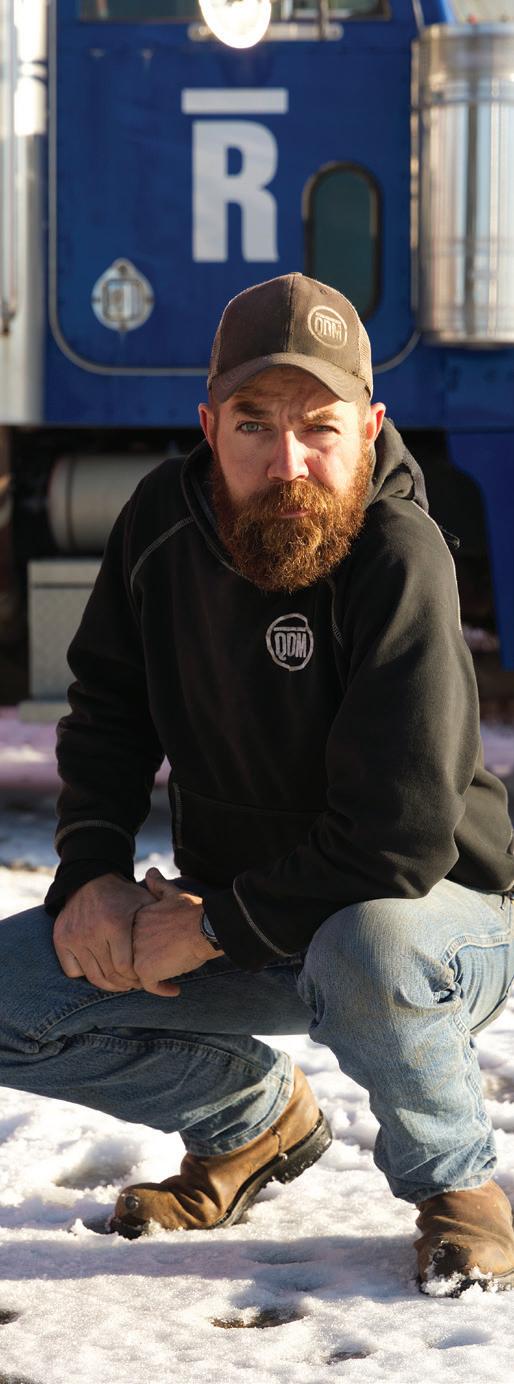
now even helps pays the bills beyond farming. In a curious move, his latest foray into the world of entertainment actually doesn’t involve his smartphone on selfie mode at all. Quick Dick has ventured into the life of a comic.
“Never in my life did I think I’d do standup comedy,” he admits, but just as readily states he loves the charge of a live crowd, which perhaps isn’t shocking for a man who grew up participating in all of his grade school drama productions. “If somebody shout-heckles you, it gets me going. You gotta be on your toes.”
His first show was in 2021 at the Thanks for Farming Tour in Lethbridge, Alta., where he debuted a 90-minute set mostly speaking to the idiosyncrasies of farm life. Making polished, well-edited videos, curated social media posts and carefully crafted comments are one thing, but a real-life setting is unpredictable. The event organizer booked Quick Dick at 3 p.m. on a Thursday. In a post-mortem, it became clear the time-slot matched the performance.
“I remember it really well; I bombed,” he says with an honest laugh. “It went terrible. I hit the stage, I got two beers in my hands, and my audience is about 100 Hutterites that came to the show. I thought, ‘oh this is not going to go good.’ The first bit I talk about Tinder for 10 minutes. It was crickets for an hour-and-a-half.”
The organizer came up to him after and suggested he should write a new set of material otherwise it may be a short-lived comedy career. For Quick Dick, it was hard to fight the feedback, but what a difference a day makes. Friday attendance skyrocketed just after lunchtime and patrons flooded in, ready to kick-start their weekend with some laughs. The audience was packed and
the result was polar opposite to the day prior.
After the set, the organizer promptly told Quick Dick to forget every word he told him earlier.
His favourite live performance has been a charity fundraiser for Constable Shelby Patton Memorial Park, held at the Grand Theatre in Indian Head, Sask., which once had the quirky boast of being the only functioning opera house between Vancouver and Winnipeg.
For starters, the intimate venue didn’t have a beer garden, so it was already quite different than his usual haunts. A true stage, hot, buzzing spotlights shone down, fixed on Quick Dick alone.
“I’ll always remember that show; it was just electric,” he says. “When you start getting a good feeling, you start emulating that back to your crowd. We absolutely blew the roof of it, and we raised a lot of money.”
Clearly, he’s doing something right. Quick Dick now books paid speaking engagements and comedy gigs 10 months in advance. He is adamant the social media fame hasn’t changed him. He still drives his 1994 Ford F-150, nicknamed Morty, and is most often found around Tuffnell, working the land, or shooting the next viral video on his phone.
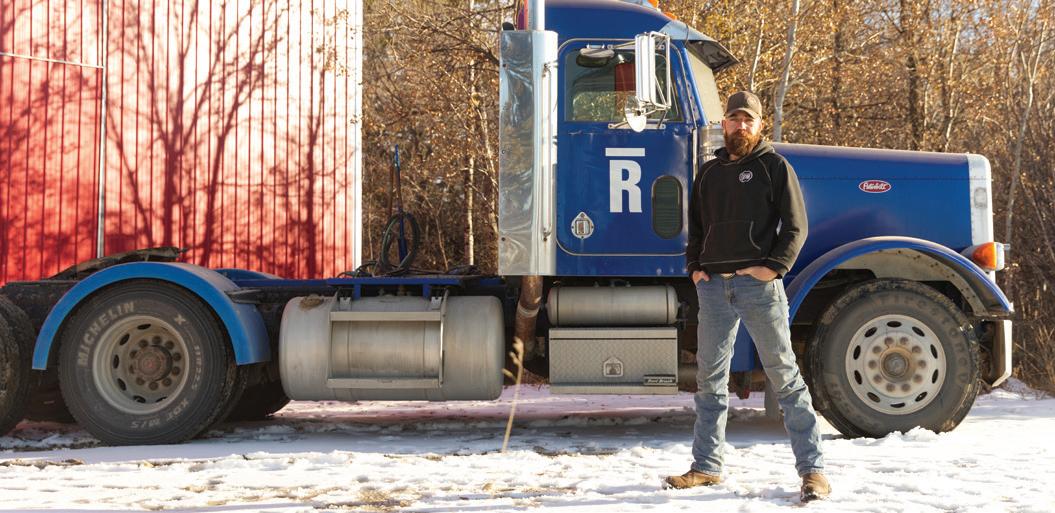
However long the fun lasts, well, c’est la vie. Quick Dick doesn’t mind.
“I didn’t expect it to go this long; I know it’s not going to last forever. Anybody knows me that I don’t care how many views or likes or shares I get. I care that I get five texts from my community. My YouTube career is an absolute and complete side hustle. I farm and raise cattle. That’s what I do.”
When I started researching sprayers at my first job, I inherited a huge scientific database of publications related to spray technology. About 2,500 papers written in the previous 50 years covered a wide variety of topics ranging from basic pest control to new ways of measuring droplet sizes. A surprising number were written by the U.S. Army and those still had the “Classified” stamp on the front page. Naturally, I read all of those—they were usually related to aspects of very fine particles, presumably for studying the dispersal of biological agents in the battlefield.
The reduction of spray drift was a recurring theme in this collection. It’s always been an unavoidable conundrum. Small amount pesticides have to be distributed densely and uniformly over a large area with a reasonably small amount of water. Only small droplets can achieve that, and those can drift.
Early efforts to reduce drift by increasing droplet size were often met with loss of pest control. Part of the reason was that most pesticides had a contact mode of action. Coverage was essential for good performance. In the literature of the 1950s and 1960s, coarser sprays received a bad reputation.
It took until the early 1990s for that reputation to slowly be rehabilitated. A small German manufacturer, Agrotop, developed a sprayer nozzle for a client that would create a foam during atomization, so the resulting deposit would allow the applicator to see which area had been treated with a knapsack sprayer. Observant users realized that drift was reduced significantly with this nozzle without a loss of pesticide performance, and that’s how the TurboDrop nozzle was born.
The nozzle made its way to North America and as soon as I saw it in 1994, I realized its potential and worked to understand this new design better. We initiated studies and learned about the importance of elevating spray pressure and creating greater overlap to make these nozzles work well. We also documented the drift reduction, two- to four-fold lower than the conventional flat fan with these nozzles, and encouraged their use.
The value of this technology was apparent, and adoption was rapid. These nozzles have been the de-facto standard for the past 20 years. They worked, in part, because newer pesticides were predominantly systemic and also because sprayers were larger, and somewhat higher water volumes were now practical. We were also growing more competitive crops that helped with pest control.
The adoption of low-drift nozzles taught me lessons in waste management that apply across agriculture. Making improvements involves recognizing an area that’s wasteful, and agreeing to pay a modest price to correct the situation. The resulting value can be much greater than this cost.
The value of low-drift nozzles, for example, extends beyond drift control. They also helped with the transition to high clearance sprayers. With these, lower booms and shrouds, the traditional ways to manage drift, were less achievable, and coarser sprays were a natural fit.

Low-drift sprays have now become important agronomic tools. The increased importance of late-season sprays (i.e.) growth regulators, fungicides, desiccants, increased the workload of spray operators. Low-drift sprays allowed treatment under higher wind conditions without increasing drift to unacceptable levels. And as a result, applications could be done on time. That’s agronomic gold.
And yet, this voluntary conversion to lower drift application has been largely unheralded. A need existed, and when a solution came, adoption followed. Yes, we needed some independent research to remove risk for early adopters. But after that, the industry ran with it. Low-drift sprays remain, in my books, as one of the three most important developments in spraying in the past 30 years, with pulsewidth modulation and weed detection. Some of these transitions have been helped by public funding for research, but none have been mandated.
Similar approaches have helped in other areas. For example, the use of planters with seed singulation has dramatically improved canola seed emergence success, saving inputs and improving harvestability. Side dressing nutrients has reduced losses and also increased crop safety. These voluntary improvements also deserve mention in agriculture’s quest for greater efficiency, lower cost and improved environmental performance.
Continuing the quest for greater efficiencies in pesticide, seed and nutrient management is fundamental to good management. The best place for this to start is within the farm operation. When done well, it creates irresistible stories that make sense to everyone.
 By Myrna Stark Leader
By Myrna Stark Leader
When Lance Stockbrugger thinks about how best to transition the 4,000-acre Saskatchewan farm to his two now teenage sons, he doesn’t plan to simply hand them the farm corporation to have them become fourth-generation farmers.
“We want kids to be better off but giving them things isn’t going to make them better off, teaching them is,” says Stockbrugger, who also has spent more than 20 years as a chartered professional accountant and now reviews farm transition plans.
He’s encouraged his sons to start their own businesses. So far, one raised chickens, the other potatoes. Even if they borrow or rent some of Stockbrugger’s equipment, they’re gaining valuable business experience, learning profits and losses, paying down debt as well as negotiating and structuring agreements. Only once they’ve been farmers on their own will Stockbrugger begin transition discussions, whether it’s transferring corporate shares to the boys, purchasing their future corporations under his existing corporation or something else.
“It’s going to be more expensive, more complicated and more time consuming but they’ll understand farming,” says Stockbrugger.
The largest wealth transfer opportunity in Canada in the next
decade rests in agriculture, which faces more complications such as increasing land values, farm size and interest rates. Older generations wonder how to ensure a comfortable retirement while setting the next one up for success and being fair to non-farming children. Younger generations ponder how to afford farming once they’re in complete control and how they would attempt to do things differently and maintain their own work-life balance.
“On- and off-farm experience of the younger generation with HR, legal and finance, their spouse, children, any siblings, how the operation functions today and its financial health, future potential for innovation and expansion, shared values, the parents’ vision of the farm’s legacy, timing, taxation are each important factors,” says Trevor MacLean. He’s helped dozens of families work through transition leading MNP’s transition smart services for Canada.
Say a 45-year-old, dependant-free, only-son who’s been working off farm but helped his parents farm for years wants to return and farm full time. His parents own their land in a farm corporation and have other financial assets such as RRSPs.
While a transfer of corporate shares to the son sounds easy, MacLean advises the process begin by creating a written inventory of all the physical assets of the farm and each participant’s operational, leadership and management abilities. This can lead to many discussions.
Alberta is a province of contrasts – from soaring peaks to historic badlands and vast forests to rolling plains. No two places are quite alike. It’s the same in agriculture. Our diversity in people, crops, practices and techniques gives us strength and insures a bright future for farming in Alberta.
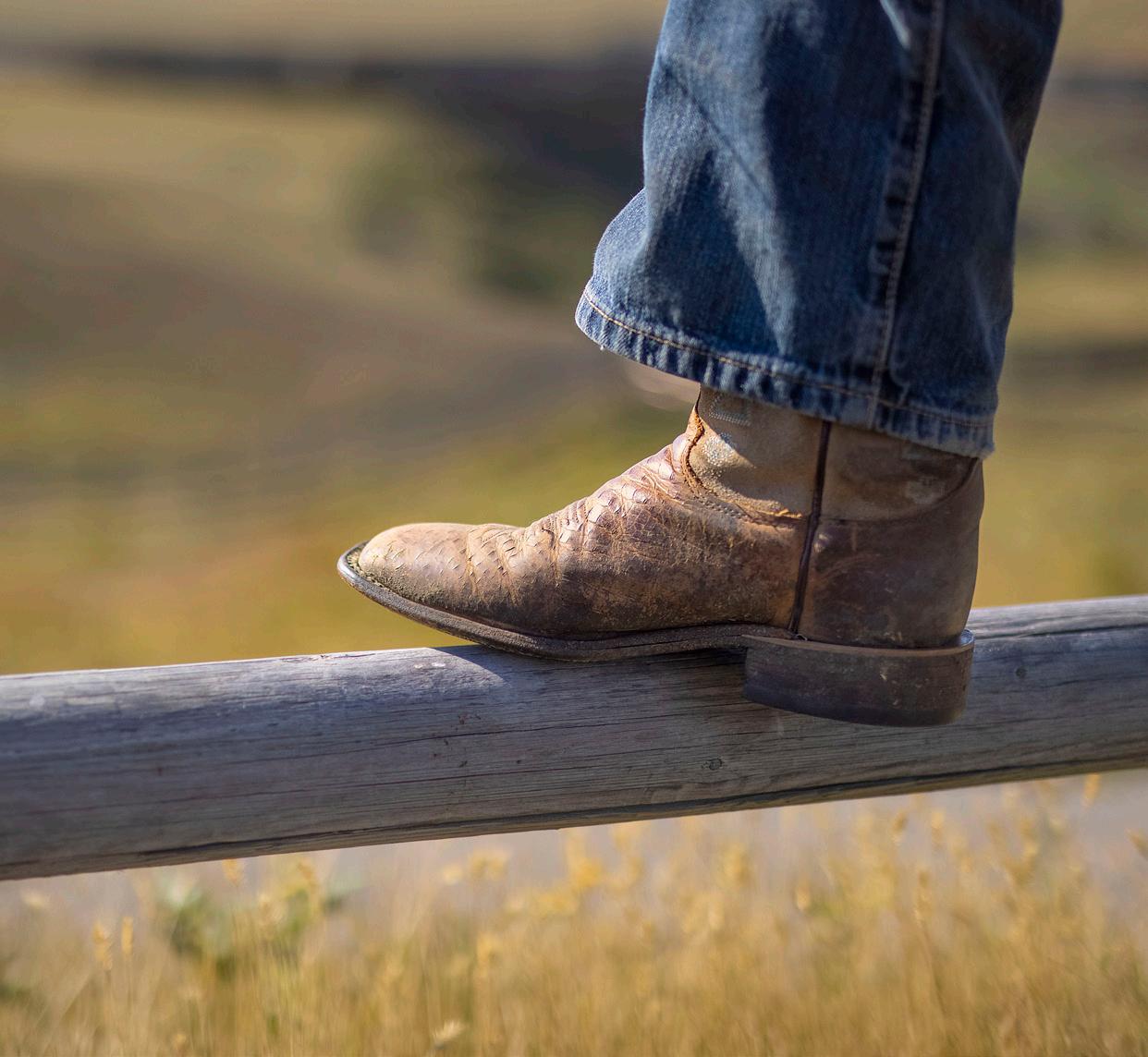

“What does a grooming plan look like? What are the expectations of all? What does the decision-making process look like in the short, medium and longer term? When will autonomy be achieved?” MacLean asks highlighting important considerations.
In his experience, governance or things the family assumes will happen but aren’t discussed with everyone pose more challenges than tax implications.
Brent VanParys agrees. Now a recently retired partner of BDO Canada, VanParys spent the last 20 years planning and implementing farm transitions across Canada.


“Parents need to be transparent about their definition of fairness and everyone must have clear and realistic expectations. Ideally, both generations align around a future vision of the farm and the family. The transition plan should focus on moving the family towards that vision, taking into consideration transition of leadership and ownership, the financial well-being of the farm and the parents, and the eventual distribution of family wealth,” says VanParys, who has seen transitions fail because of poor communication, trust issues or even interpersonal issues within a family.
Both MacLean and VanParys stress that discussions include everyone. Eventually financiers, accountants, lawyers and so on, but initially all family, including spouses, in-laws, other children and possibly even grandchildren.
“Ideally, both generations align to the future vision and there are adequate resources to provide for all. Parents need to be transparent about their definition of fairness and everyone needs to have clear expectations. Then, policies can be created to reflect this,” says VanParys.
Tools such as unanimous shareholder agreements can protect
“It can be very easy to invite people into a corporation or a partnership but it’s very hard and expensive to get them out, especially without proper governance around bringing them into said corporation or partnerships.”
- Trevor MacLeanTrevor MacLean Brent VanParys - Courtesy Brent VanParys

those involved from family outside the corporation, others inside the business, as well as protect the business. Prenuptial agreements, documenting how shared assets will be maintained, or structuring a board of directors should be determined since farm families often find difficulty holding each other accountable.
“Given the wealth involved, it’s important to protect it from unnecessary risk,” says MacLean. “It can be very easy to invite people into a corporation or a partnership but it’s very hard and expensive to get them out, especially without proper governance around bringing them into said corporation or partnerships,” says MacLean.
Bill C-208 allows farms to advantageously transition corporate assets to farming children, postponing capital gains tax if farm capital assets don’t exceed $50 million.

In the 45-year-old example, a freeze on assets and valuation is recommended so he can purchase in whole or buy into his parents’ farm corporation at a specific point in time, benefiting from the asset’s appreciation from that day forward. He could also be gifted voting or non-voting corporate shares.
If his parents corporation holds non-farming assets like a family cabin or family heirlooms, it must be purified before transfer to where 90 per cent of listed assets are used in the corporation.
In certain instances, these experts say it may make sense to keep two corporations if the younger farmer already has a farming corporation or has started a farm through a new entrant or Young Farmer Program, or if the child wants to diversify or add a new farm sector. If farm assets such as equipment are shared, there can be lease or rental agreements between corporations. And, depending on the assets in both corporations, for tax purposes, the parents’ corporation may be moved into the child’s.
MacLean opposes joint land titling unless a strong intentions document binds owners and addresses potential circumstances such as divorce, illness or one owner needing cash and wanting to sell their land while another still farms it.
For Stockbrugger, he has seen too many times where a transition plan failed because children were only ever employees and final say was never theirs.
“When the parents finally hand over the reins, most of the time, the operation fails in a short order because children haven’t
been taught how to run a business successfully,” he says.
Regardless of transition method, VanParys says the farm should have a clear, agreed-upon forward-looking business plan.
“A forward-looking family will start addressing these things long before the actual transition transaction. They’ll have thought about it either by expanding the operation or the senior generation building off farm wealth so they’re not as dependent on their equity for their retirement,” says VanParys.
If things line up perfectly, transition may take six months to one year but many take up to five years given moving parts and the number of people involved. Costs may range between $20,000 to $50,000 for simple transactional items, to
$100,000 to $200,000 or more for larger more complex operations.
“It’s really a small investment into protecting the legacy of the family and protecting the family itself, making sure that there is harmony through the transition and post transition,” says MacLean. “Transition is a journey. You’re never going to please everybody. That’s ok. It’s a process. Take it slow. With careful planning and everybody buying in and revisiting the plan often, everybody has clarity. Typically, when that happens, even though it’s change, it’s easier to continue moving forward. Often, it’s taken a generation or two to build the farm so taking time to come up with the right plan can avoid it all being lost.”

By recycling used oil, filters, antifreeze, their plastic containers and DEF containers, you help keep Saskatchewan’s water, land and air clean and safe.
We have one of the best recycling networks in the country, let’s use it.
37 EcoCentres and nearly 100 drop-off points province wide usedoilrecyclingsk.com Toll free in SK1.877.645.7275
Saskatchewan Association for Resource Recovery Corp.

“Ideally, both generations align to the future vision and there are adequate resources to provide for all. Parents need to be transparent about their definition of fairness and everyone needs to have clear expectations. Then, policies can be created to reflect this.”
- Brent VanParys
Paul Kuntz is the owner of Wheatland Financial. He offers financial consulting and debt broker services. Kuntz is also an advisor with Global Ag Risk Solutions. He can be reached through wheatlandfinancial.ca.

It feels like grain producers are in one of two categories after the last couple harvests: doing really poor financially or doing absolutely amazing financially.
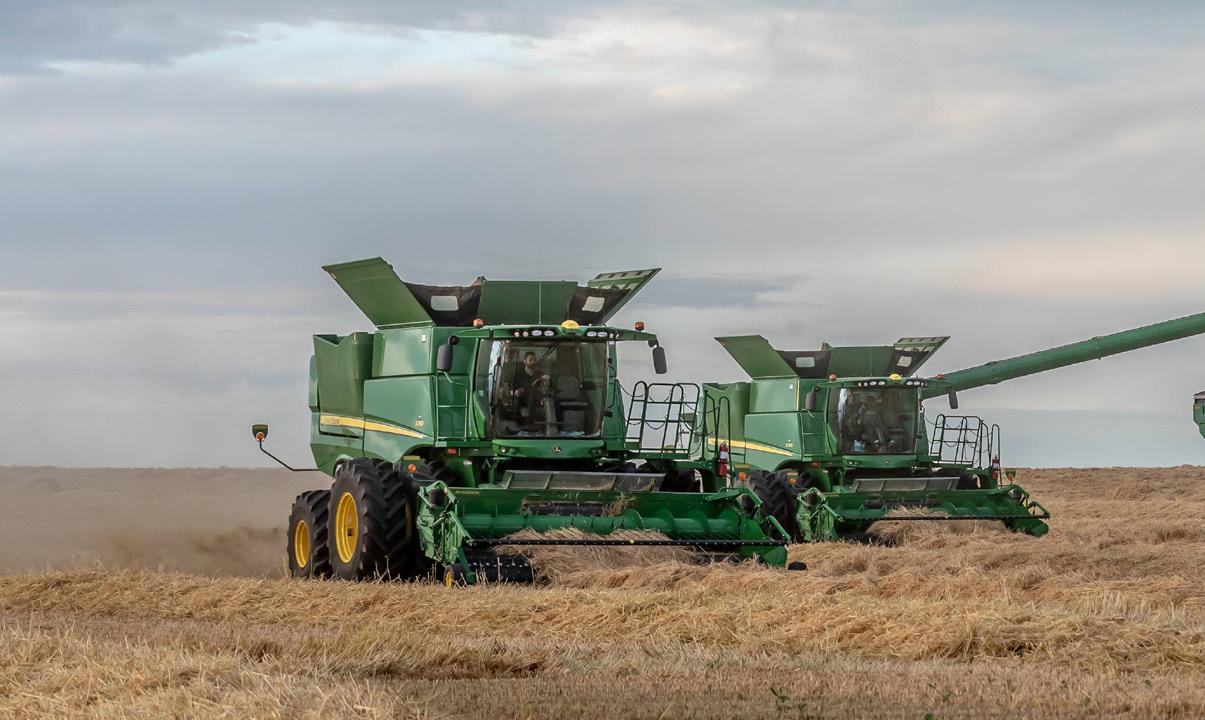
The lack of rain fall (or in some cases the excess moisture) has played havoc with our crops in 2021 and 2022. There are producers who managed to harvest a decent crop in these conditions. This is creating the great divide. With grains prices historically high, a reasonable crop can give you profit and an average to above average crop can give you excessive profits. A drought, however, leaves you living off crop insurance. Both situations can lead to lapses in financial planning.
When you know there is not enough money to go around and all you hear is the rising price of expenses, you can easily shut down and stop caring about the budget of the farm. The exciting part about the budget on a grain farm is the income projections. If you have suffered multiple drought years on your farm, there is no excitement in projecting revenue. You will have a justified pessimistic view of the upcoming year. No one wants to plan for a wreck, so it is easy to just leave it alone and not do it.
If you are coming off back-to-back good crops with these grain prices, budgeting can also seem senseless. You can buy whatever you want. Anything makes sense. If you are grossing $900/ac and spending $400 with $500/ac left over, budgeting seems like a waste of time.
I can make a prediction that is 100 per cent correct: whatever your financial situation is, over time it will change. If you experience great profits, this will change at some point. If you are experiencing weather-related financial losses, that too will change.
Decision-making needs to be based in historical reality mixed with realistic projections. We need to filter through the extremes and create budgets that ground us in reality.
The easiest place to start with budgets is the expense side. We are confident in what we must spend. Mortgage, equipment and rent payments are examples of fixed costs that we know with certainty what they will be. Our fertilizer, chemical and seed costs are also readily available. Other costs such as fuel, insurance and utilities can be adjusted from last year amounts. Labour costs are
set by you so you should be able to project that expense. Repairs to machinery and buildings are a wild card. All you can do is look historically and adjust for increased prices.
The most difficult aspect of budgeting is predicting income. The variability of grain income can make or break the budget. I recommend starting with crop yields. Go back and accurately look at your yields. Do not focus on the few acres where your yield map shows 82 bu/ac of canola. Focus on the total amount of harvested grain and compare that to your total seeded acres. Look at what your yields have been in the past five years. Factor in your fertility plan for the upcoming year. Consider your current moisture situation. We all know that dry soil can be quickly rejuvenated with a good rain and we know that good moisture conditions in the fall can be quickly eroded with a hot


windy spell prior to seeding. Regardless, it is still a good idea to use all available data to predict your upcoming year.
The last variable in predicting income is the price per bushel. There are prices available for 2023 new crop for many commodities. It would be irresponsible to lock all of your estimated production and there is no guarantee that those prices will hold until fall, but they are a great reference point. There is no value in doomsday predictions. Could wheat fall to $6/bu? I suppose it is possible but we know that $11/bu for 1 CWRS 13.5 protein is being offered on contract for September 2023. There is also no value in predicting excess windfalls. Could canola go back up to $26/bu? I am sure it could but the September 2023 new crop bid is around $19/bu. After you factor in your delivery cost, you can calculate a reasonable income that is backed up by real data.
This exercise will help you plan out the next year. Where I struggle is when looking at decisions that are longer term like taking new debt to buy equipment, borrowing for land or signing five-year lease deals. Is it reasonable to expect that a commodity price that has almost doubled in value will stay that way? There is overwhelming historical evidence that these prices will not stay. If we look at CWRS wheat, the highest prices achieved in the marketplace were in 2008. By 2016, wheat had lost over half of the value it had reached at the highs. If you look at oil, it was also at record high values in 2008 hitting over $190/barrel. Within one year of the high, the price fell over 50 per cent. Today oil trades around $85/barrel.
Producers tell me that based on the price of inputs, land rent and machinery, today’s grain prices must stay. I agree that for us to pay for these items, we will need high grain prices. The disconnect is that the market does not care what our costs are. The bid for the grain we produce will be at the point of whatever the market wants to pay and whatever the seller will accept. History shows us that we eventually sell our grain regardless of the price. From 2015 to 2020, canola hovered around $9/bu to $10/bu. We sold every bushel we produced. If canola were to drop from $20/bu to $10/bu, deliveries would stop for a while, but eventually we would start selling again.
I warn against doomsday predictions but once we look past 2023 into 2024 and beyond, it is hard to say what grain prices will do. It is a reasonable question to ask if we should use these prices to budget for long-term plans. I recently had a discussion with a banker who was using five-year historical data on a farm to predict future income. When we used that method of calculating income and factored in today’s costs, that farm was not viable anymore. I argued that this approach was accurate in depicting the farm’s financial situation. The loan was declined anyway. We were able to secure the required financing elsewhere.
It will be interesting to see how the industry reacts going forward. If machinery dealers, ag retailers and landlords feel that grain income will remain high while bankers feel prices will not last, we will be in some trouble.
Do not forget to budget.

“I warn against doomsday predictions but once we look past 2023 into 2024 and beyond, it is hard to say what grain prices will do. It is a reasonable question to ask if we should use these prices to budget for long-term plans.”
Western Canada’s livestock producers play a major role in food security both domestically and around the world.
But what happens when they face some of the same challenges as consumers? After all, they are consumers, too. According to Statistics Canada’s 2021 Census of Agriculture, nearly all of Canada’s canola (99.2 per cent), spring wheat (97.6 per cent ) and barley (96.2 per cent ) crop areas were reported as produced in Manitoba, Saskatchewan and Alberta. The three provinces also accounted for 72.7 per cent of Canada’s cattle and calves inventory.

Still, feed is the most significant cost in livestock production and can represent as much as 70 per cent of production costs. So, when factors outside of a producer’s control impact the supply or affordability of feed supply, it can be a tough and costly pill to swallow.

Livestock producers strive to feed their animals a balanced diet—one that has appropriate levels of protein, energy and minerals’ keeps their animals healthy; and helps them grow quickly. Providing appropriate feed rations can be an easier task for producers of some animals than for others. Beef cattle, for example, are happy to munch on grass.
“Grass in spring and summer pasture is the primary feed source for cattle in the summer months,” says Jason Lenz,
vice-chair ofthe Alberta Wheat Commission and owner of a small cow/calf operation. “It’s always supplemented with salt blocks and mineral. Some people will also supplement their calves with some barley and wheat blended with mineral in a feeder at the same time, and that provides another source of protein and energy.”
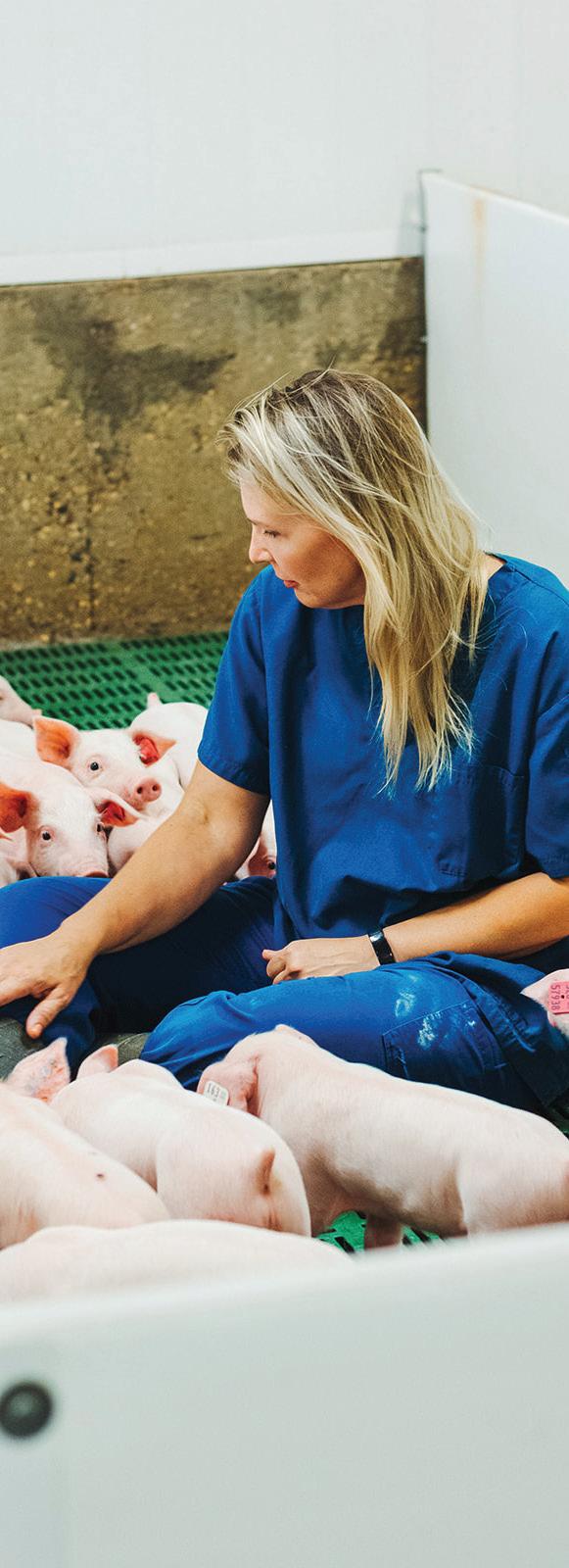
Dairy cows need more attention paid to their diets. A dairy cow producing milk every day requires a high-energy, highprotein diet. “Pigs need close attention to what you feed them to get optimum growth rate from them,” says Lenz. “When we had hogs on our farm, we had a feed mill that measured all the ingredients right down to point-one KGs. My wife often said, ‘we look after the diets of the animals better than our own.’”
Under ideal conditions, livestock feed is tailored to an animal’s specific dietary needs, formulated for that perfect feed-topound ratio, and leads to profitable outcomes at market. Of course, as any farmer knows all too well, ideal conditions are never a sure thing, especially when it comes to weather.
Last year’s heat dome brought an extended drought across the Prairies, creating a glut of dust, but little in the way of crop production. A poor harvest resulted in a low supply of feed for livestock and drove up the prices of available feed supplies.
“Last year was such a dry year. It was recorded as the driest in 20 years on the Prairies,” says Lenz. “There was less hay, less silage, just less of everything for feedstock.”
Cattle producers had to turn to other options to keep their herds fed and healthy or downsize their herds because they didn’t have feed for them.
“That’s the worst case scenario, but I know some had to do that last year and during droughts in other years,” he adds.
Livestock producers adjust their feed rations to include what’s more readily available, or more affordable. “Corn comes up from the States to feed cattle in the feed lots south of Calgary,” says Lenz. “They prefer to stay on barley, but if prices get too high and there’s corn available, they’ll switch to putting some into rations for their feed lots.”
Many hog producers in Western Canada utilize feed sources, like corn or feed wheat, which are grown on their farm or nearby farms. Due to the drought, farmers were pushed to look farther afield, importing more corn and soybean meal from other sources such as the U.S., increasing transportation costs and logistics uncertainty.
Poor weather isn’t the only feed challenge. “Global factors create challenges,” says Cam Dahl, general manager of Manitoba Pork. “While we buy almost all of our feed from North America, the price we purchase at is set in the international marketplace. Ukraine, for example, is one of the world’s largest suppliers of corn and other feed grains, so

having Ukraine’s supply of feed restricted has put upward pressure on feed costs. That’s difficult.”
Mark Ferguson, general manager of SaskPork, seconds that observation. “There are things going on everywhere in the world. Our advantage in Western Canada is we typically have one of the lowest feed costs in the world,” he says. The drought, however, levelled that advantage. “Last year, we were not anywhere close to having the lowest feed costs. Last year, we were one of the highest.”
Another challenge: COVID-19. Or, more specifically, the supply chain challenges created by its restrictions. “We were seeing a significant shortage of trucks and truck drivers before the pandemic,” says Dahl. “Some of those logistic chains became more difficult as a result of COVID-19, so it’s just become a little bit harder to get some of those supplies.” And, of course, costlier. A silver lining: certain challenges driving up grain prices have become opportunities for the feed industry. As the war in Ukraine sidelines that country’s ability to ship wheat out, other countries are looking to Canada for supply. A China embargo on Australian barley also means greater export opportunities for Canadian barley growers.
“They have to look somewhere in the world for that,” says Lenz. “They looked at Canada to supply. China is such a big market, so it had an impact on our prices as well.”
The good news for Prairie farmers is that 2022 brought a much better summer.
While some areas were hot and dry from mid-July through September, the Prairies still had a good growing season. “We had lots of rain in June and a relatively good summer,” says Lenz. “Hay crops have been above average, so that’s going to help guys with rebuilding their feedstocks for the winter and into next year. For the most part, I think the cereal crops here in Alberta are in excellent quality with decent yields. That’s going to help build up our overall supply.”
Things are also hopeful in Saskatchewan, says Ferguson. “We’ve got some dry areas in the west, central and southwest. A lot of the eastern half is looking really good. The signs are we’re going to have a lot of feed grain out there and more reasonable prices,” he says.
Hope is good, but a long-term plan is better.
The weather might have improved, but challenges in agriculture are ongoing. While augmenting feed rations with imported ingredients or building bigger infrastructure to stockpile feed inventory are good short-term options, both can be costly and take a toll on a producer’s bottom line. “There’s a lot of uncertainty that producers have to deal with,” says Dahl. “The supply of feed is one of them, and producers need to be very active in responding to these pressures.”
For now, livestock producers are grateful for the replenishment to their feedstock. It’s a nice reprieve from what Dahl says have been an “interesting” couple of years.
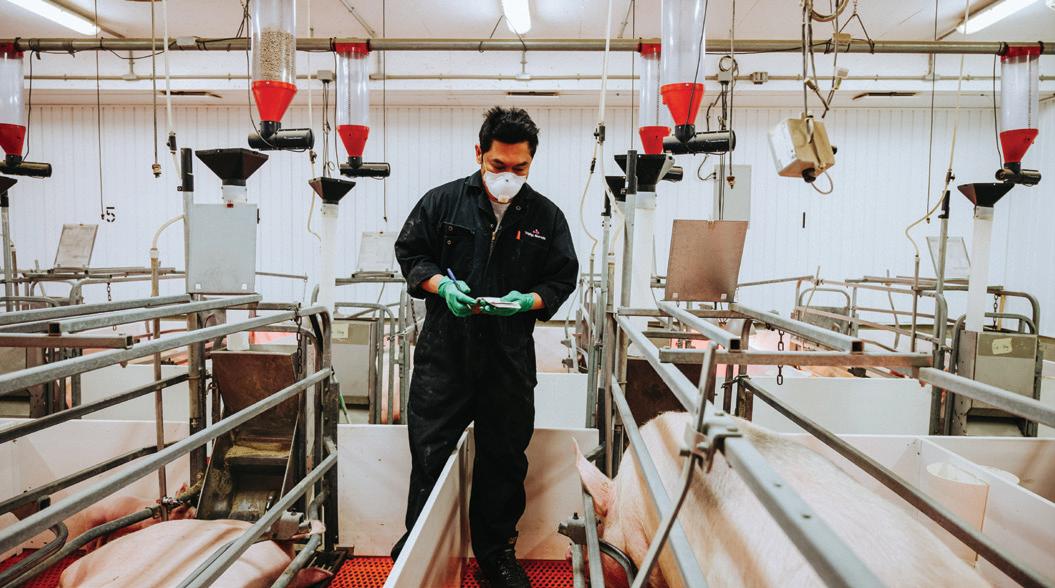
Agriculture is changing fast. And you’re looking toward a future that’s more profitable for your operation and sustainable for your family.
Whatever you're planning next, our specialized Agriculture team can provide the right flexible financing solutions to help you get there.

We understand what’s
your mind, because we live and work here too.
With nearly 20 years of experience in the Canadian agri-food industry, Cloutier is a member of National Bank’s Agriculture and Agri-Food team. Having served in recent years as Senior Economist at La Coop fédérée (now Sollio Groupe coopératif) and Director of Economic Affairs at Les Éleveurs de porcs du Québec, he specializes in international trade and agricultural policies.

A graduate in agronomy and agri-food management from Laval University and a four-time participant in the prestigious Harvard Agribusiness Seminar, Cloutier supports National Bank’s agricultural and agri-food financing teams with his expertise in business environment analysis.
The peak in interest rates will probably have been reached in 2023 if inflation continues to falter. On the other hand, it was expected that the Bank of Canada’s policy rate would stabilize closer to three per cent than to four per cent . On this point, many observers will have been surprised by more drastic movements than expected. In an unwavering effort to curb runaway inflation, the increase was particularly intense.
After the fertilizer shock initiated in the fall of 2021, this rate hike is another challenge for agricultural businesses across the country. Particularly capital intensive (it takes between $7 and $9 of assets to generate a dollar of revenue), agriculture is sensitive to this macroeconomic parameter. However, with high net incomes in 2022, Canadian agriculture remains well positioned to face a new era in interest rates.

Of course, everyone foresees a reduction in investment and consequently a downward pressure on asset demand. Specifically, it was expected that land values would rise modestly in 2022, in the wake of rising rates. However, the most recent Canadian land value data from Farm Credit Canada showed a significant increase nationally for the first six months of 2022, with a 10 per cent increase in Eastern Canada and a seven per cent increase in the Prairies. In the second half of the year, interest rates will have contributed to a much calmer environment.
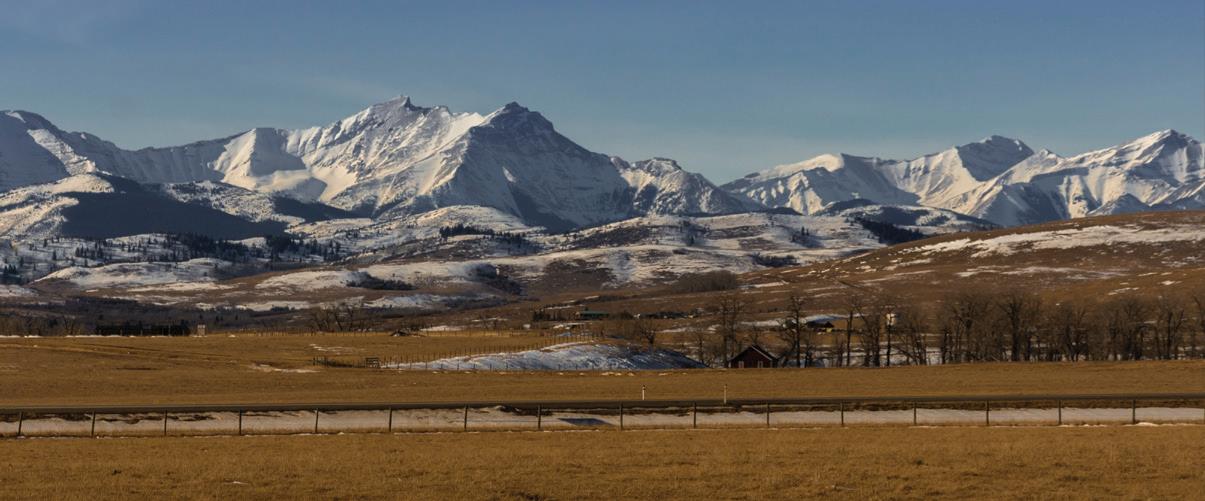
Unquestionably, the doubling and even tripling of the interest rate burden is causing entrepreneurs to be cautious. Several projects have been reviewed and postponed. This is understandable as we return to the rates that prevailed some 15 years ago. This calls for an adaptation, but it is far from being unprecedented. In this context, a comparison between the first and second decades of this century is instructive.
The ability to cope with an increase in expenses is notably dependent on the profit generated by agricultural operations. While profitability is very stable in supply-managed production, it is much more variable in cattle production and in the grain sector. Putting profits and interest costs together—as compiled by Statistics Canada—leads to some reassuring findings. It is true that the interest coverage ratio was higher in the last 10 years than in the early 2000s. The low interest rates that have prevailed since 2010 are the main reason for this. However, even before that, agriculture was solidly meeting its interest expense. The same will be true in 2023, coming off an excellent year in terms of net farm income, marked by good profitability in Canadian fields.
According to many observers, central bank policies have been so draconian that the risk of a recession is very real. The corollary would be a faster rate cut than anyone could have anticipated. Let’s just say that the stars are aligning, and that the predictability of interest rates is better than that of fertilizers, where the potential surprises are still very large.
Have a good winter.





